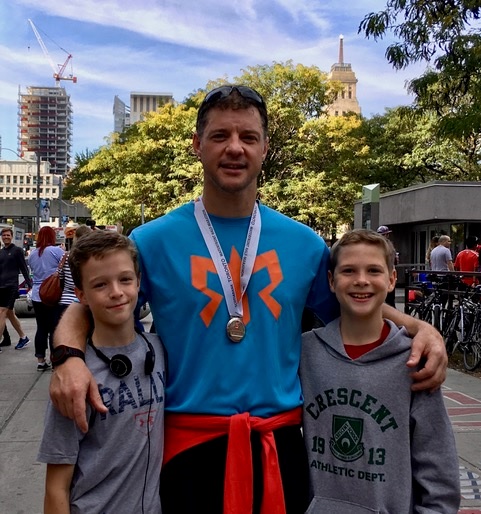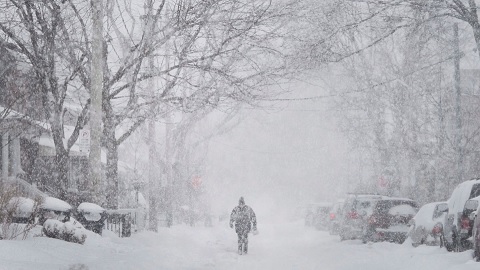[vc_row][vc_column][vc_column_text]When I’m not mortgage planning I am, like all of us, busy doing other things. After some debate, I decided to include a section in my blog that talked about another area of life that I find interesting at the moment. Call it a personal touch. Since relating to people is a part of the job I really enjoy, this is an attempt to relate on a non-mortgage level.
These days, I’m into running …[/vc_column_text][vc_tta_tabs active_section=”1″ title=”Recent Posts (Click on the titles below to view)”][vc_tta_section title=”Introduction (March 30, 2010)” tab_id=”1490220526793-2435d9e9-bd09″][vc_column_text css_animation=”fadeIn”]When I’m not mortgage planning I am, like all of us, busy doing other things. After some debate, I decided to include a section in my blog that talked about another area of life I find interesting at the moment. Call it a personal touch. Since relating to people is a part of the job I really enjoy, this is an attempt to relate on a non-mortgage level.
These days, I’m into running. I have no idea why because the only running I ever did growing up was laps before or after practice, which were always a chore to be endured. In my twenties I would sometimes do some turn-over-a-new-leaf-and-get-in-shape running but the first day skipped was also always the last in the string, and life would soon return to non-running normal. Then my thirties hit and with a busy job, young kids and no more team sports on the calendar my clothes started shrinking.
But running-to-get-in-shape had never worked for me in the past and at this point, weight loss, which has been slow in coming by the way, was just a bi-product. I think the real reason I’ve been running about 20 to 25 miles a week now for the past 10 months has been a combination of Toronto’s fabulous and hugely underrated running trails (thank you Jane Jacobs), the fact that my best friend Paul (a.k.a. Doogle) had caught the running bug a few months before me, and of course, the goal.
Growing up I always planned to run a marathon at least once in my life. It’s easy to decide that when you’re young and you feel like you have forever to do it, but by my mid-thirties my window was closing about as fast as my clothes were shrinking, so it was now or never. We ran the Chili half marathon in March (loved it) and we’re running the Mississauga half in May. The moment of truth will occur on September 26, 2010, at the Scotiabank Toronto Waterfront marathon. It’s a flat course, supposedly one of the “faster” marathons, which means “easier” in runner-speak. Whatever. It’s still 26 miles and 385 yards of forward momentum.
That’s it for now. Tomorrow is a running day and I’m turning in early…![]() [/vc_column_text][/vc_tta_section][vc_tta_section title=”Seven Years Later and Still Running! (March 23, 2017)” tab_id=”1490222070827-3ce7db4b-8223″][vc_column_text css_animation=”fadeIn”]Seven years ago I wrote my first and only post about getting into running and since then I have admittedly been much busier doing it than writing about it.
[/vc_column_text][/vc_tta_section][vc_tta_section title=”Seven Years Later and Still Running! (March 23, 2017)” tab_id=”1490222070827-3ce7db4b-8223″][vc_column_text css_animation=”fadeIn”]Seven years ago I wrote my first and only post about getting into running and since then I have admittedly been much busier doing it than writing about it.
As my experiences accumulated, the challenge of describing them in a way that would do them written justice became daunting. But I’ve been wanting to take a shot for a while, so here goes. As the ancient Chinese proverb says, “a journey of a thousand miles begins with a single step”, and I’ve easily run farther than that by now.
In December of 2009 I ran my first official race: the Egg Nog Jog … and don’t let the name fool you.
This is an ass-kicker of a 10.8 kilometre race that takes you on a big loop of back country roads with a healthy dose of rolling hills throughout. There’s a doozy of a hill to climb at about the 7k mark and then you get a steep hill to charge down just before the finish line.
The scenery is great – a mix of woods and open-field properties with beautiful old houses on them. A great backdrop for enjoying your burning legs and lungs as you crest yet another hill.
The race finishes in a conservation area and everyone gathers for hot soup and some good post-race food in a Quonset hut. It’s always a cold December day and only the most dedicated runners go, decked out in well-worn, patched-together gear that looks like it earned favoured status with its owners over many miles.
I used to joke with my best buddy Paul (a.k.a. Doogle) that unlike the big city summer races, no one rolls out of bed on a cold December morning and decides to go run the Egg Nog. And lives to tell about it anyway.
Looking back, it was that very first race that got me hooked.
I remember casually looking over the other runners as we stood in the starting corral. There was an older man beside me and after the starting horn sounded, a woman in front of me took off with one of the weirdest strides that I have ever seen, with her legs shooting out more sideways than backwards. I remember thinking, “How can she even run one kilometre?”
I can’t recall how Doogle and I heard about the race but like I said, we picked a doozy and by the end, it took everything I had to keep moving forward. I shuffled down the last dirt road before you turn down the finishing chute that takes you back in to the conservation area and there, water bottles in hand and finishers medals around their necks stood both the older man and the woman with the crazy stride clapping me in.
There ended the first of many humbling lessons that the sport of running has taught me.
Lesson #1: There’s more to running than just flat-out running.
I was exhausted and intrigued by this sport, which was unlike just about all of the other ones I had regularly participated in until then. Running was about enduring, not overpowering. It required fluidity and a clear mind, not a shoulders down, attack mentality. (I used to play football, hockey and rugby, so you get the idea.)
For me, the challenge of running was about pushing my limits and eventually completing distances and hitting times that I had genuinely and whole-heartedly believed were simply not possible.
But between those few moments when a new summit was reached, there have been rich and varied training runs through pounding rain or snow storms, in scorching heat or bitter cold – when you’re a year-round runner, you see it all.
Some of my best memories are of middle of night relay-race training runs and gut-busting sprint repeats at the track with my running group. The entire journey has been rewarding, and that’s why I have been at it this long.
Forgive me for wandering.
There are two reasons why I’m motivated to start writing again about running: 1) it’s now been fifty races since the my first one, and 2) the next one will be my most ambitious challenge yet.
More on that tomorrow. 
For now I am enjoying a few cookies from a surprise gift delivery of cookies in Toronto made by BetterCookies.ca. They are really delicious![/vc_column_text][/vc_tta_section][vc_tta_section title=”The Around the Bay Silver Medal (March 24, 2017)” tab_id=”1490385157397-db7459ff-0ead”][vc_column_text]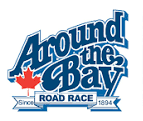
On March 26, 2017 I will attempt to run the Around The Bay (ATB) Road Race for the sixth time.
If you’re even marginally associated with the running community in these parts, then you know about the ATB. It’s a 30k race that takes you around Hamilton Harbour and it’s famous for being the oldest road race in North America, running strong since 1894.
It also has some cool traditions that make it unique. Examples include the Valley Inn Road hill (a nasty beast at the 26k mark), the Grim Reaper, and some years, the Grim Reaper’s wife decked out in full costume, who will high-five you just past the top of that hill, the stretch of beautiful lakefront neighbourhoods along North Shore Boulevard West, the lift bridge at 15k, and the spectators who bang pots and pans along Beach Boulevard.
The ATB’s 30k is a perfect distance for me because if I run it right, I can still have just enough left to push for home at the end. Of course, running it the right way is more easily said than done because the course has a particularly challenging layout. Unlike modern long-distance races that are designed to produce fast times and ensure maximum participation, the ATB was designed to challenge the best runners of yesteryear and only an elite few ran it. Today, we still run (mostly) in their footsteps.
The course starts out fairly flat as you make your way west from the FirstOntario Centre (which I will hereafter refer to as Copps Coliseum because that’s what it was called for most of my life). The first 10k used to run through old neighbourhoods in the city with people out in their lawn chairs to cheer us on but the course crossed an active railway line and one year a train came through and delayed the back group of runners, so the route was altered.
The new section runs through a long strip of factories and there is a smell in air that makes your thirsty lungs reluctant to take a full breath. The less said about this section of the race the better. (Strangely, CN is the lead sponsor of the race but they can’t hold up their trains for a couple of hours once a year to eliminate this blight on the granddaddy of all races?).
The first half of the race is fairly flat but as you turn east on to North Shore Boulevard, the rolling hills start. One after another, long and gradual hills intermix with short steeper ones, culminating in the Valley Inn Road hill at 26k, which is the toughest of them all.
If you pushed your pace too hard in the first half, the second half of this course becomes a meat grinder (and I speak with experience wrought from having learned that lesson the hard way). But once you top the Valley Inn Road hill, it flattens out for about one kilometre before sloping downwards for the final 3k.
If you’ve paced well and your legs are still working, you can combine the free speed of the last downhill section with the magnetic pull of the finish line and haul ass home. Again though, easier said than done. Part of what makes this race so alluring is that many runners don’t pace it well, even experienced ones who are running the ATB for the first time.
You can tell because they publish the 10k, 20k and 30k splits in the race results and the majority of runners post their slowest 10k, by far, over the last 10k. That’s understandable because it’s at the end of the race and it’s hilly, but the gap between the first two 10k times and the last one is often quite pronounced.
In four of my first five runnings of this race I ran negative splits, which means that each 10k of my race was faster than the previous one. It’s a terrific feeling to be cruising down the last few kilometres and passing runners in droves as you do it.
But then there was the year I went out too fast.
That year I blew up at about the 23k mark and had to run/walk in the rest of the way, with wicked cramps biting at my calves every time I tried to run another 100 metres or so. That was pure agony, but many runners will tell you that these moments of abject failure ultimately steel their determination to reach a new level. And so it was for me.
This year, I’m gunning for the ATB silver medal, which is awarded to any male runner who finishes the race in under 2 hours and 15 minutes. That requires a pace of 4 minutes and 30 seconds per kilometre over the 30k course. When I first started running I marvelled at anyone who could hit that time, but then Doogle did it, twice, and it went from seeming impossible to just seeming really, really hard to do.
So far I have run the following times (in order): 2:47 (2011), 2:39 (2012), 2:46 (2013 – my blow up race!), 2:35 (2014), and 2:25 (2015). I missed last year because of injury. This year I’m going for broke.
I give myself a 10% chance of being one of the three hundred runners who earn the silver (out of the 6,000 who run the race). My hope rests on the fact that I ran a 1:33 half-marathon earlier this month at the Chilly Half Marathon (which works out to a 4:24 per kilometre pace), but that course was flat – and anyone who has run the ATB knows that the last 9k of the race is where hope meets truth.
It’ll take decent weather, a well-executed race plan (where I don’t go out too fast) and a whole lotta determination to hang on at the end. I’ll check back next week to tell you how I did.
Until then.  [/vc_column_text][/vc_tta_section][vc_tta_section title=”Around the Bay Race Report (April 3, 2017)” tab_id=”1491231661853-3eb85cc6-a89a”][vc_column_text]
[/vc_column_text][/vc_tta_section][vc_tta_section title=”Around the Bay Race Report (April 3, 2017)” tab_id=”1491231661853-3eb85cc6-a89a”][vc_column_text]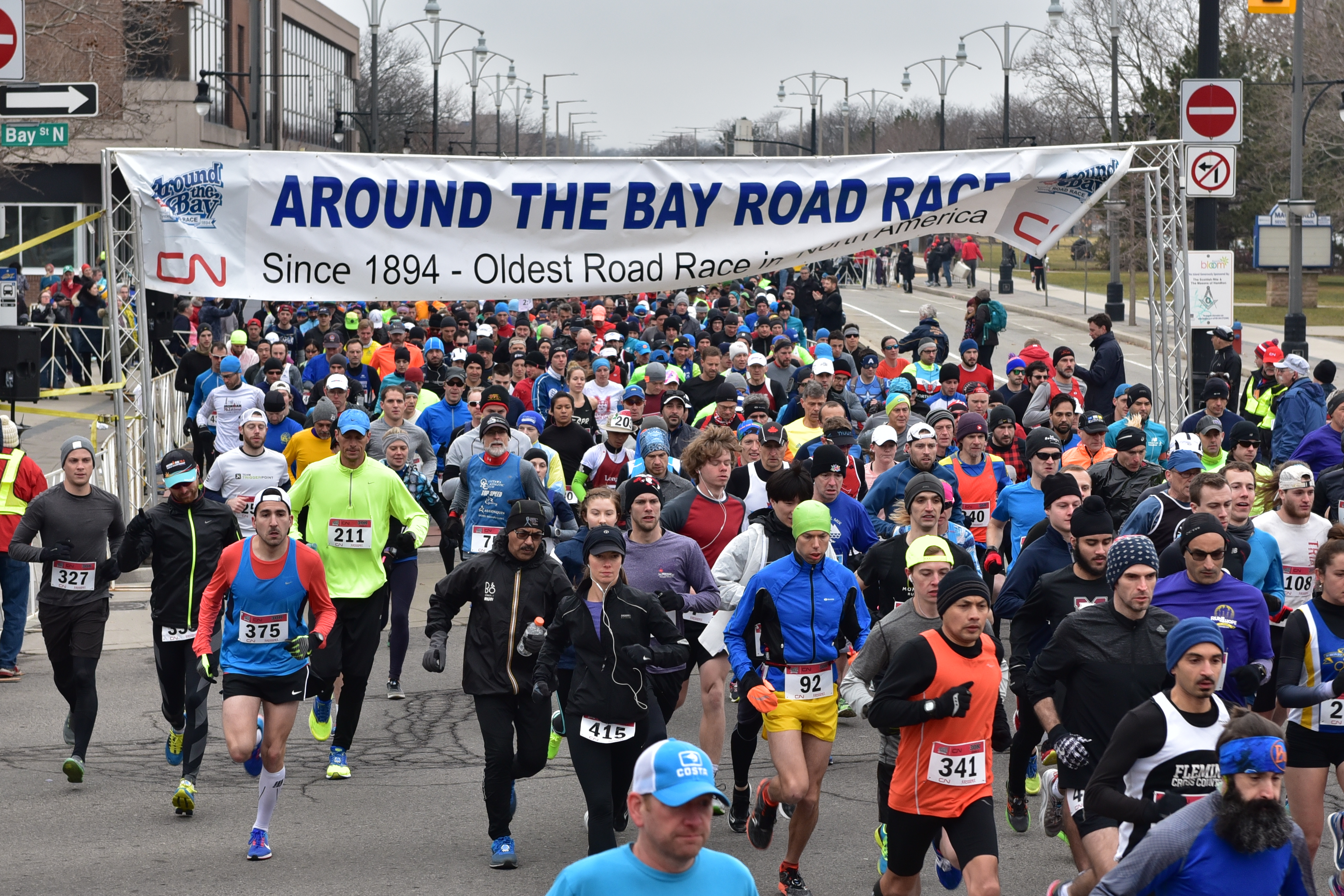 Doogle and I have a habit of showing up late for races.
Doogle and I have a habit of showing up late for races.
One time we took the ferry over to Toronto Island for a race and were still locking up our bikes when the starting gun went off. At another race we arrived late and were both still using a porta-potty when the horn went.
We decided to turn over a new leaf on Sunday and arrived at the ATB with plenty of time to spare. We nabbed a good parking spot and left our bags at the VIP bag check, which was $40 well spent. I am always cold and wet when I finish this race and in past years they haven’t offered any bag-check service so I have sat shivering in the stands waiting for friends to cross. This year we would have dry clothes waiting for us at the finish line.
Weather is always a key factor in any distance race and last Sunday morning the wind was cold and howling. The flags outside Copps Coliseum were pretty much standing straight and every group of runners I walked past inside the stadium was talking about it. It’s rare to get really good weather for this race, because it’s early spring and you’re running most of the race alongside the lake, but there was no doubt that this was about to be the windiest of my six ATB races.
We made our way outside towards the start line and began to warm up.
Technical side note: You are typically given two times when you run each race – your gun time and your chip time. Your gun time gives you the total time between when the starter’s gun goes off and when you cross the finish line, but in a large race where you not starting near the front, it can take a minute or two before you cross the start line. To account for this delay, each runner wears an electronic chip that is picked up by sensors at the starting and finish lines and this tracks the exact time that you spend running the course.
The ATB silver medal is awarded by gun time, not chip time, so anyone who is going for it has to cheat up as close to the front as they can get to minimize the amount of time it takes cross the start line after the gun goes off.
Now back to the race.
There was the usual electricity in the air at the starting line as everyone nervously went through their last-minute preparations, steeling themselves for the challenge to come while being mostly oblivious to the voice over the loudspeaker that takes us through to the final countdown.
We sang Oh Canada and passed a giant flag from the front to the back of the starting corrals (a cool new tradition!) and then it was five … four … three … two … one … and we’re off!
When you start up at the front of a race it’s easy to get pulled along by the elite runners around you. It always feels exciting to finally be off and it’s easy to talk yourself into a faster pace than you have any business running. Of course, you pay dearly for that mistake later (a lesson I have learned the hard way more than once), so I made a point of letting the runners around me pull ahead and just focused on holding a smooth, fluid form and keeping my breathing relaxed.
We had to run straight into the wind for the first 10k and I knew pretty early on that I wasn’t holding the pace I would need to run a sub-2:15. I needed to be averaging about a 4:33/km pace for the first half and I was closer to 4:38/km. That might not seem like a big difference but it adds up.
At about the 5k mark I knew it was time to choose – either increase my speed until I was back on silver-medal pace or run based on the effort level that I knew I could sustain over the full distance and try for a new personal best (PB) instead.
After all of the training and hard work you put in leading up to a race, it can be tough to let go of a goal you had set in your mind. But I’d already experienced the agony of going out too fast in a previous ATB, so the decision seemed obvious. I discarded my silver medal aspirations and decided to hold my pace steady.
When we made our turn at the 10k mark the wind was more from the side than the front. I slowed my pace just a little to recover and chatted with nearby runners who were all happy to be through the windiest section.
When we got to the lift bridge at the 15k mark I was feeling pretty tired. There will inevitably be times in an endurance race where your body feels sluggish and you still have a long way to go. At those moments you can’t overthink your tiredness or discomfort, you just have to keep rolling and trust that the moment will pass.
And pass it did.
Doogle’s wife Marija handed me a water bottle at the 17k mark as planned (thanks Marija!), I took a gel, and as I made the turn on North Shore Boulevard I felt a surge of energy. I was now entering the part of the race I knew so well that I could run it with my eyes closed.
Over the years Doogle and I have run several out-and-backs along the last 13k of the course on training runs to get our legs used to the hills, and from this point on I recognized every turn in the road. I had to check my pace, mindful of the distance I had yet to run, but the toughest part of the race had now passed. Also, even from that far away, I could start to smell the finish line.
I worked my way through the hills, not pushing too hard on the ascents and conserving energy so that I could open up my stride and accelerate on the descents. As we got to about 24k my thoughts turned to Stan and my ATB favourite tradition, which I didn’t mention in my previous post about this race because I wasn’t sure if it would still be going.
There is a long downhill section as you approach the Valley Inn Road hill and every year I have run this race I have heard the thumping bass of Queen’s We Will Rock You playing as I approached. As you turn the last corner and the Valley Inn hill comes in to sight you are greeted by Stan, who stands by the side of the road next to an 80s ghetto blaster that cranks out that song over and over again. Stan high fives you and gives you a smile as you gear up for the hill challenge that has been in the back of your mind for the last 25.5 kilometres.
Two years ago Stan started having health problems and word spread that he might not be at his usual spot. It turns out that he was in the hospital in the days leading up to that race but he insisted on returning to his perch and sure enough, Stan and his song were there to urge us along. (High fiving Stan at that point in the race is so ingrained in my mind that even when I pass this spot on training runs I high five the air in tribute to him.)
As I started the downhill section I was heartened to hear the familiar sounds of We Will Rock You in the distance. Without realizing it, my pace quickened and as I turned the last corner there was Stan, in a wheelchair now, and off to side, with a smile as wide as ever.
I cut over to Stan and we smiled at each other with a look of true appreciation and we did our usual high five. I felt a lump in my throat and checked my watch to see my current pace: 3:57. Not exactly holding to my race plan there!
I stayed smooth on the hill, breathed deep and managed my way up without too much difficulty. When I reached the top I gathered myself and then picked up the pace for the last 3k of downhill leading in to the stadium.
This was the time to reap the benefits of having not pushed too hard at the start of the race. My pace quickened and I hit 4:16 and 4:10 for my last two kilometres with the pull of the finish line now in full force.
I finished the race in 2:18:03 (chip time), good for 327th place overall.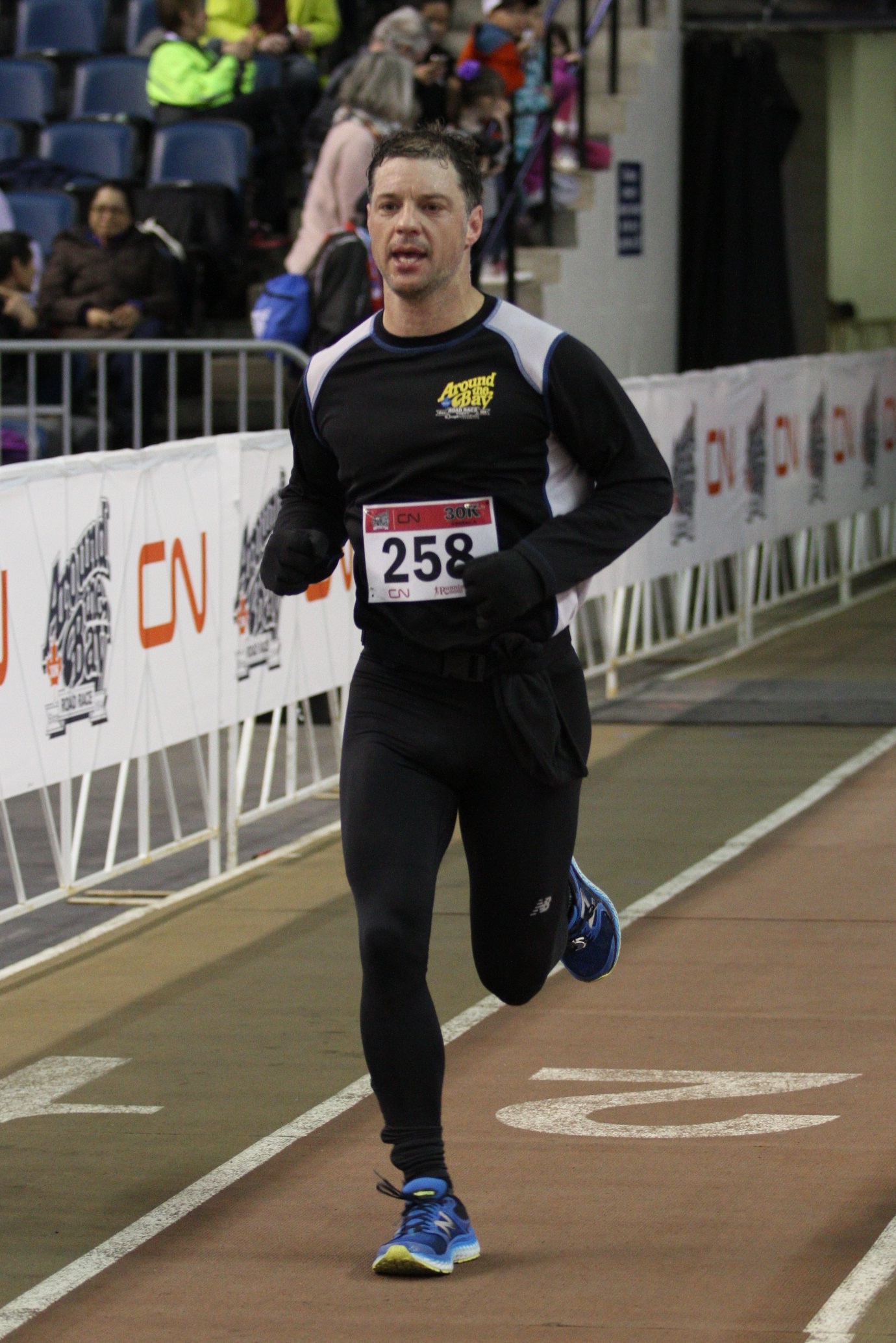
That time was seven minutes faster than my previous PB, and I also managed to run negative splits over each 10k stretch, meaning that I got faster as the race went on (1st 10k – 47:40, 2nd 10k – 45:22, 3rd 10k – 45:05).
While I didn’t get the silver I had dreamed about, I was still happy with my race. I felt certain that I’d made the right call not to go for broke early.
It didn’t help that the weather was tough this year as well. To put the conditions in context, consider that this year only 265 runners out of 4,243 total participants ran a sub-2:15, compared to an average of 383 sub-2:15 runners over the period from 2012 to 2016.
That said, the wind wasn’t the reason I didn’t run a sub-2:15. It might have cost me a minute or two but after having just run this race I will readily concede that I just wasn’t ready to run a sub-2:15. (Yet!) Hitting that time is very hard … which is why they give you a special medal if you pull it off.
I still view last weekend as a success because a) I had fun and b) I got closer to sub-2:15 than I would have thought possible for most of my running life. And of course, I am now more motivated than ever to go back next year to try to shave three more minutes off my time and to finally break through.
In the meantime, there are other races to run … and I now have a month more of training before I fly to Vancouver to run the BMO Vancouver Marathon on May 7, 2017.
Stay tuned!  [/vc_column_text][/vc_tta_section][vc_tta_section title=”The Lonely Road (April 26, 2017)” tab_id=”1493247201342-0332c430-adb6″][vc_column_text]
[/vc_column_text][/vc_tta_section][vc_tta_section title=”The Lonely Road (April 26, 2017)” tab_id=”1493247201342-0332c430-adb6″][vc_column_text]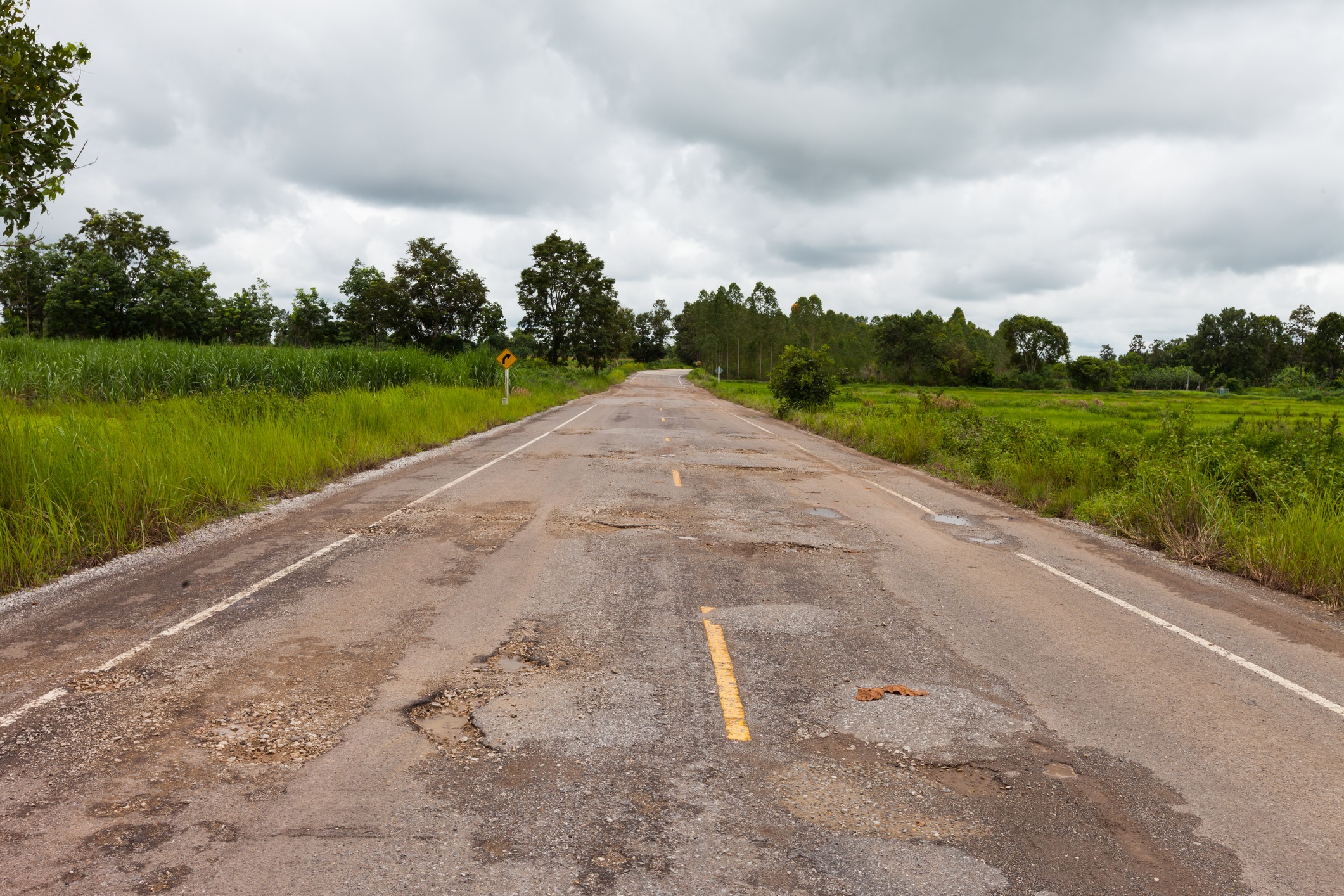 A few years ago I was on a training run that was much like the ones I am doing now. It was late February and I was ramping up my mileage in preparation for a spring marathon.
A few years ago I was on a training run that was much like the ones I am doing now. It was late February and I was ramping up my mileage in preparation for a spring marathon.
When I get up over about 26k I start running different routes that take me south down to Lake Ontario along the Lower Don Valley trail, and to the Leslie Street Spit (also known as Tommy Thompson Park).
The Spit is one of Toronto’s hidden treasures. It’s a man-made nature sanctuary with a car-free road that stretches out into Lake Ontario about six kilometres. There is a lighthouse at the end and when you turn around, you can head back on a different road that loops around the Spit’s large lagoon, which is full of wildlife.
There was a cold-weather advisory that day and the place was empty. I was coming back along the outside of the lagoon and I hit a patch of black ice and took a full tumble – hands splaying out in front of me as I slid along for a few yards.
I got up, covered in mushy snow, and after a quick check to make sure everything was still working, trundled on.
At that point I was running into a bitter wind and was wet and cold from my wipeout and after having briefly stopped. I was about 20k into the run with another 10k or so to go before I would be home, and the road I was on stretched off into the distance.
There was nobody around for miles and at that point I remember thinking “this sure is a lonely road”.
After that day I started noticing lonely road sections on other long runs. I would usually be on a barren stretch of road at a point in the run when I was feeling sluggish and tired. The moments themselves didn’t offer much worth remembering, besides the accomplishment of having endured them.
I mentioned this recurring experience to Doogle and another running buddy, Cameron, and they started noting lonely roads on their long runs too. Now, years later, the lonely road has become a distinct and easily recognizable moment in every long run I undertake.
The lonely road is never a fun part of the run. It’s the part where you learn to just keep grinding, or as Rudyard Kipling wrote, “to fill the unforgiving minute with sixty seconds’ worth of distance run”. But if you push yourself through this tough test enough times, you learn how to handle it in the moment and come out the other side with some kick left.
From struggle comes strength.
What is true in life is also true in running. ![]() [/vc_column_text][/vc_tta_section][vc_tta_section title=”Vancouver Marathon Race Report (May 7, 2017)” tab_id=”1494628086869-dc890988-b44c”][vc_column_text]
[/vc_column_text][/vc_tta_section][vc_tta_section title=”Vancouver Marathon Race Report (May 7, 2017)” tab_id=”1494628086869-dc890988-b44c”][vc_column_text]
This trip was an extended long-weekend. I took the early flight from Toronto to Vancouver on Thursday and arrived at 9:30 a.m. Pacific time. I met up with Doogle and his family and we spent the next few days enjoying all that the city has to offer (my boys missed some school over the March break so they stayed home with Mom this time).
We took a shuttle from our hotel to the Capilano Suspension Bridge Park, used complimentary bikes from our hotel to ride around Stanley Park (several times!), walked to the Runner’s Expo to buy some race swag and pick up our race kits, and pretty much loved every minute of being on the ocean with snow-capped mountains in the background. When the sun is shining, Vancouver is a fantastic place to spend time and we made the most of it leading up to the race.
This was my fifth attempt at the marathon and I will readily admit that it still intimidates me in a way that other race distances don’t. In my first three attempts, I hit the dreaded wall at about the 35k mark, which is often referred to as “bonking”. That’s when your body runs out of carbohydrate fuel and has to rely on fat for energy instead. This is much harder for it to do, and once you hit that stage your body starts rebelling and your brain basically tries to shut everything down.
In each race, I started getting more and more lethargic, fighting to maintain the speed that I had spent the last three hours working so hard to maintain. As I fought to hold my pace I could feel my legs starting to seize up and before long the searing cramps would start. It would feel like I was being bitten and there were times when I would actually let out an involuntary yelp as pain surged through my leg.
At those points it was all I could do to keep going, at any pace, running for a short time and then stopping to walk as the cramps kicked in again. These were agonizing experiences and when I finished my first three marathons my only real satisfaction came from having continued to fight through the pain and still finish, overcoming the urge to stop altogether.
Experienced runners say that the second half of the marathon starts at the 30k mark. Even though you are well past the halfway mark in actual distance, the end of this 42.2k race is so hard that it will take half of your total effort to complete the final 12.2k. And you can’t really train for the end of a marathon either. Once you pass the 35k mark, it’s just a matter of willing yourself to the end.
That’s what makes running 42.2k so tough. You can’t replicate the feeling of exhaustion you will have at that point in the race on any training run. And all of your hard work leading up to that point depends on your ability to grind out the last stretch. Every runner wants to quit then, and many do. But you have to live with yourself afterwards, knowing that the course broke you and feeling like you let yourself down in the moment. My failure in those first three marathons stayed with me long afterwards.
With my spirit bloodied but unbowed I decided to join a running program, determined to learn how to properly run this race. I joined Marathon Dynamics, which is led by Kevin Smith, a man with boundless energy who can probably run backwards faster than most of us can run forwards.
Kevin got me on a plan – I started varying my workouts with tempo runs, speed work at the track, fartleks, and of course, long runs on Sundays. Every workout had a specific purpose that was designed to bring it all together on race day.
For my fourth marathon, I ran the Goodlife Toronto in 2015 and finally completed the distance without bonking. It was hugely satisfying to have run through the finish line with something resembling a normal stride and with that challenge off my list I then focused on shorter distances over the next couple of years, happy to have easier recovery times and more flexibility in my training schedule.
Fast forward to this race.
Doogle and I had talked about doing a destination marathon for some time and if I was going to put in the training, I wanted my fifth attempt at the distance to be somewhere special. After checking out the course map, Vancouver seemed like the perfect choice.
I’d had a good season leading up to Vancouver with personal bests (PBs) in the half-marathon and 30k distances. I completed my third training season with Marathon Dynamics and also had some sessions with a nutritionist, who taught me that I was eating a ton of sugar in foods that I had thought were healthy. Some fairly simple changes in diet got my weight down to 190 and helped me pick up some free speed.
We wok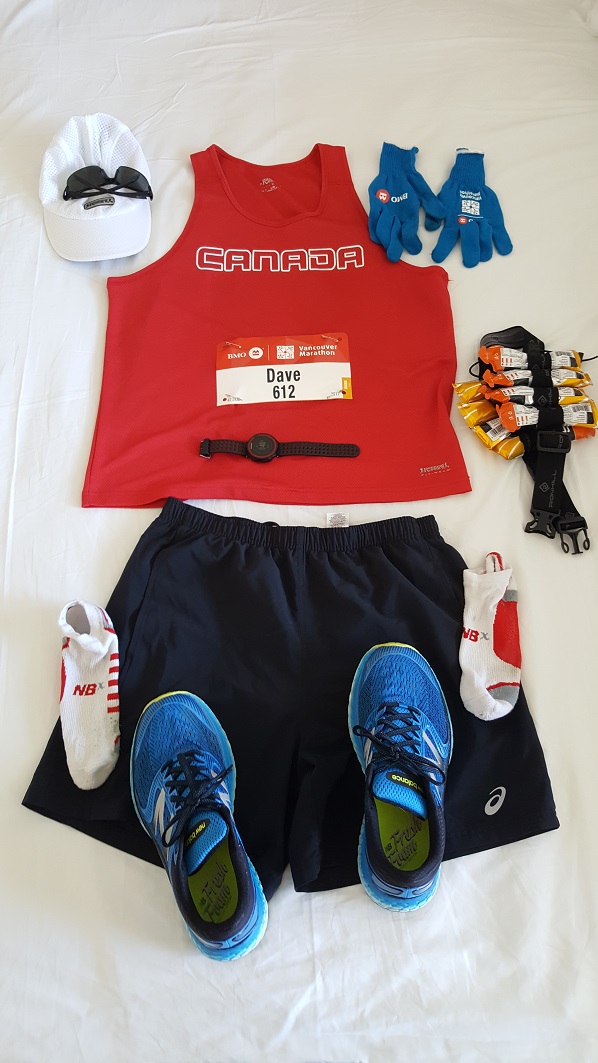 e up at 5 a.m. on race day so we could eat and drink early, to allow time for full digestion. Doogle brought his slow cooker so we made up some steel-cut oats and mixed in some fresh fruit. Oatmeal is now my go to meal before a long run – it sits in your stomach like a yuletide log.
e up at 5 a.m. on race day so we could eat and drink early, to allow time for full digestion. Doogle brought his slow cooker so we made up some steel-cut oats and mixed in some fresh fruit. Oatmeal is now my go to meal before a long run – it sits in your stomach like a yuletide log.
We took a cab to the starting line and found everything very well organized. There were no lines at the bag check or for the porta-potties (a minor miracle) and everyone went through their final stretches and warm-up routines. We walked to our starting corrals, sang O Canada and wished everyone around us a good run.
Then the horn sounded and we were off.
Doogle and I had decided to run together for most of the race and our plan was to start slow, giving our bodies time to warm up while making sure not to get sucked along by the energy of the other runners, most of whom go out way too fast and pay dearly for it later.
The first 5k was a mix of rolling hills along city streets, and the local residents came out to cheer us on. We had our names on our race bibs and spectators shouted encouragement, which is always much appreciated. There were lots of signs too – my favourite was “You’re going to carpe the hell out of this diem!”
The temperature was a perfect 10 degrees Celsius and there wasn’t a cloud in the sky. We hit the race’s big hill at about the 10k mark and took it easy all the way up – there was a band at the top singing Livin’ On A Prayer with lyrics adapted to running up the hill, which got smiles and some laughs.
We entered Pacific Spirit Park at about the 14k mark and the temperature dropped quite rapidly. As we headed around a bend and started down a long hill you could hear a guy and a girl playing some kind of cool new-age techno music over loudspeakers about half-way down. It had a nice rhythm and it was easy to match my stride cadence to the beat as we cruised down the hill. It was a brief and welcome distraction at about the one-hour mark.
Doogle and I talked off and on as we ran. Talking is an easy way to gauge whether you’re running at a sustainable pace. If you can speak fairly normally then your body is in an aerobic state, which is sustainable over a long distance, but if you’re having trouble getting the words out, then you’ve gone into an anaerobic state and are burning up your energy much more rapidly – too rapidly for the mid-point of a marathon race.
The kilometres rolled by and I tried to take in the scenery around me, soaking up the atmosphere whenever I could. We came to a long hill at the 30k mark and the group around us slowed noticeably. The sun was high in the sky at that point (it was now about 11 a.m. in the morning) and we were running up a car bridge.
Doogle and I held our pace but I was getting thirsty and was glad that we had worked out a plan for Marija (Do ogle’s wife) to hand us water bottles at the 32k mark. The race organizers did a fabulous job with the water stations and I took water at every one. But late in every long race there’s a point where I need more than just a half cup of water and if I can get my hands on a full bottle to run with then, it can be the difference between having a great race and blowing up. (So thanks for that Marija!)
ogle’s wife) to hand us water bottles at the 32k mark. The race organizers did a fabulous job with the water stations and I took water at every one. But late in every long race there’s a point where I need more than just a half cup of water and if I can get my hands on a full bottle to run with then, it can be the difference between having a great race and blowing up. (So thanks for that Marija!)
We entered Stanley Park and started to make our way along the path that we had enjoyed so much on our bike rides. Not surprisingly, I didn’t appreciate the gorgeous views as much this time around.
The path wound in and out of the ocean bays and several of the runners around me stopped to walk, managing cramps or just general exhaustion. I finished off Marija’s water bottle as I ran, took my second last gel, and tried to focus on breathing deep and holding my form.
This was the moment I had been expecting/dreading/preparing for. The kilometres now felt like they were dragging on forever and it seemed like the next marker would never come. My pace dropped a little and I just tried to hang on.
At the 40k mark we left Stanley Park and re-entered the city for the final push through the downtown area. I could hear people cheering me on but I didn’t even have the energy to smile in appreciation anymore. I just focused on getting to that next point – a light post, a building, a streetlight … whatever was just ahead.
The last two kilometres of the Vancouver marathon are uphill so it’s even more of a battle to finish than usual. One veteran runner I chatted with at the Running Expo on Saturday described it as a “cruel finish” and I would have to agree.
I thought about trying to kick hard at the end but my calves and quads had been on the verge of cramping for the last several kilometres and I didn’t want to risk it. Instead, I just kept grinding until I finally crossed the line, using every ounce of push I had left.
My body temperature drops rapidly at the end of long races and I needed to get out of my wet clothes quickly to stop shivering – my teeth were actually chattering! The bag check was very well-organized and before long Doogle and I were hobbling through the crowd of tired but contented runners.
The race included a huge street festival at the finish line with the 8k, half-marathon and marathon runners mingling together. I struck up conversations with other random runners and we shared stories of the race, enjoying the music playing in the background and eating free food. (I ate the best bag of salt and vinegar chips I have ever tasted!)
I didn’t run this race with a specific finishing time in mind. The Around the Bay race was my goal race this year and this marathon was more about enjoying the experience. We knew going in that the course had a reputation for being beautiful but tough, so we didn’t expect to light it up. My only real hope was that I would meet the moment of truth that I knew would come late in the race with courage, and fight through it – which, in the end, I think I did.
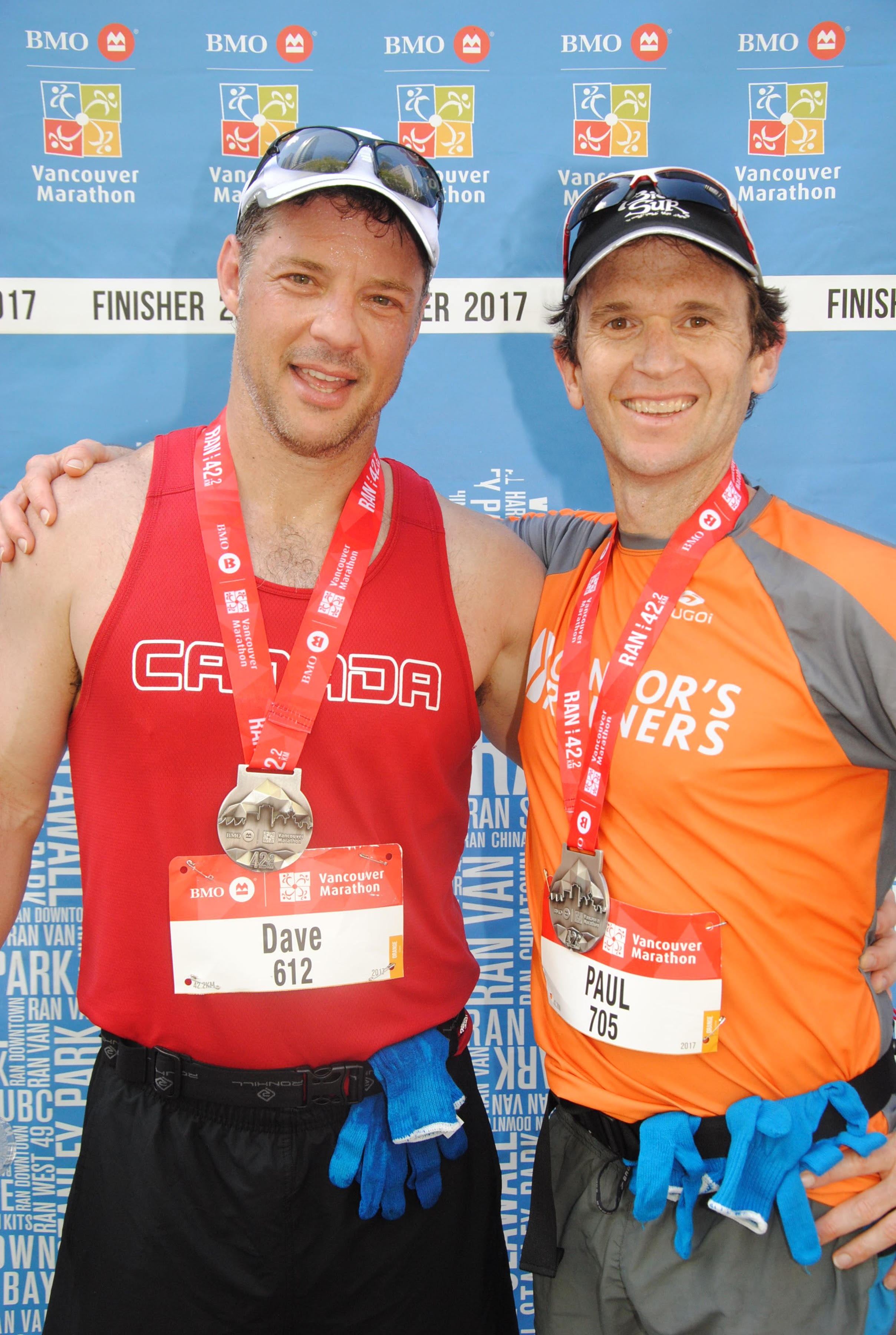 I finished in a time of 3:27:46, which was 7 minutes and one second faster than my previous best (woot woot).
I finished in a time of 3:27:46, which was 7 minutes and one second faster than my previous best (woot woot).
My result aside, this was a race and a trip that I will remember for a long time. It is always a treat to run with Doogle and the Vancouver Marathon is a first-class event that I highly recommend it to anyone who is looking for an out-of-town race with plenty to offer active families. (Doogle’s kids ran the 2.5k kids race on Saturday and that too was well organized.)
That’s a wrap for the winter season. I’m going to train for a half-marathon as my goal race in the fall and look forward to some 5k races with my boys over the summer – I’ll have to keep working hard if I want to keep up with them for much longer.
Until next time. ![]() [/vc_column_text][/vc_tta_section][vc_tta_section title=”My First 5k – The MEC Toronto Road Race Six (September 10, 2017)” tab_id=”1505738496841-0a96a761-23a4″][vc_column_text]
[/vc_column_text][/vc_tta_section][vc_tta_section title=”My First 5k – The MEC Toronto Road Race Six (September 10, 2017)” tab_id=”1505738496841-0a96a761-23a4″][vc_column_text] Last weekend I took my first shot at a 5k race.
Last weekend I took my first shot at a 5k race.
Every runner has a certain race distance they are ideally suited for and my running coach Kevin has been telling me for a while that the 5k is probably mine.
For one thing, I’m a bit heavier than most runners and the more weight you have, the more energy you have to burn to move it. Endurance running is a battle of attrition where energy conversation is key. The longer the race, the more of a disadvantage added weight becomes.
The 5k favours speed a bit more than endurance but don’t let the shorter distance fool you. A well-run 5k is a gut buster from start to finish. My running buddy Stephen recently advised, “At the halfway point, if you don’t feel like you might not be able to finish you’re not running it hard enough”.
My goal race this fall is the Scotia half-marathon in late October and I will also be doing the Run For The Toad 25k trail race at the end of September, so with a good ten weeks of training under my belt and the Toad coming up in three weeks, last weekend seemed like a good time for a tune-up.
Mountain Equipment Co-op (MEC) was offering a 5k/10k/21.2k/42.2k race in Tommy Thompson Park which is just about my favourite place to run. I decided to go for it. Doogle signed up too and brought his bike with him so that we could ride instead of drive down to the start line.
We woke up early to stretch and eat and then rode down the Lower Don Bike Trail to the lake. We took the new back entrance to the park on a freshly paved trail you access from Cherry Beach (and which hasn’t yet been discovered by many people).
The air was a little crisp and the trails were empty so we had both perfect weather and a perfect way to get down to the race. It was about 15k in total but an easy ride.
We tied up our bikes, picked up our race bibs, and did a light jog of about 1k to warm up with a few striders at the end. (Striders are short bursts of acceleration that basically rev your engine. My running coach swears by them.)
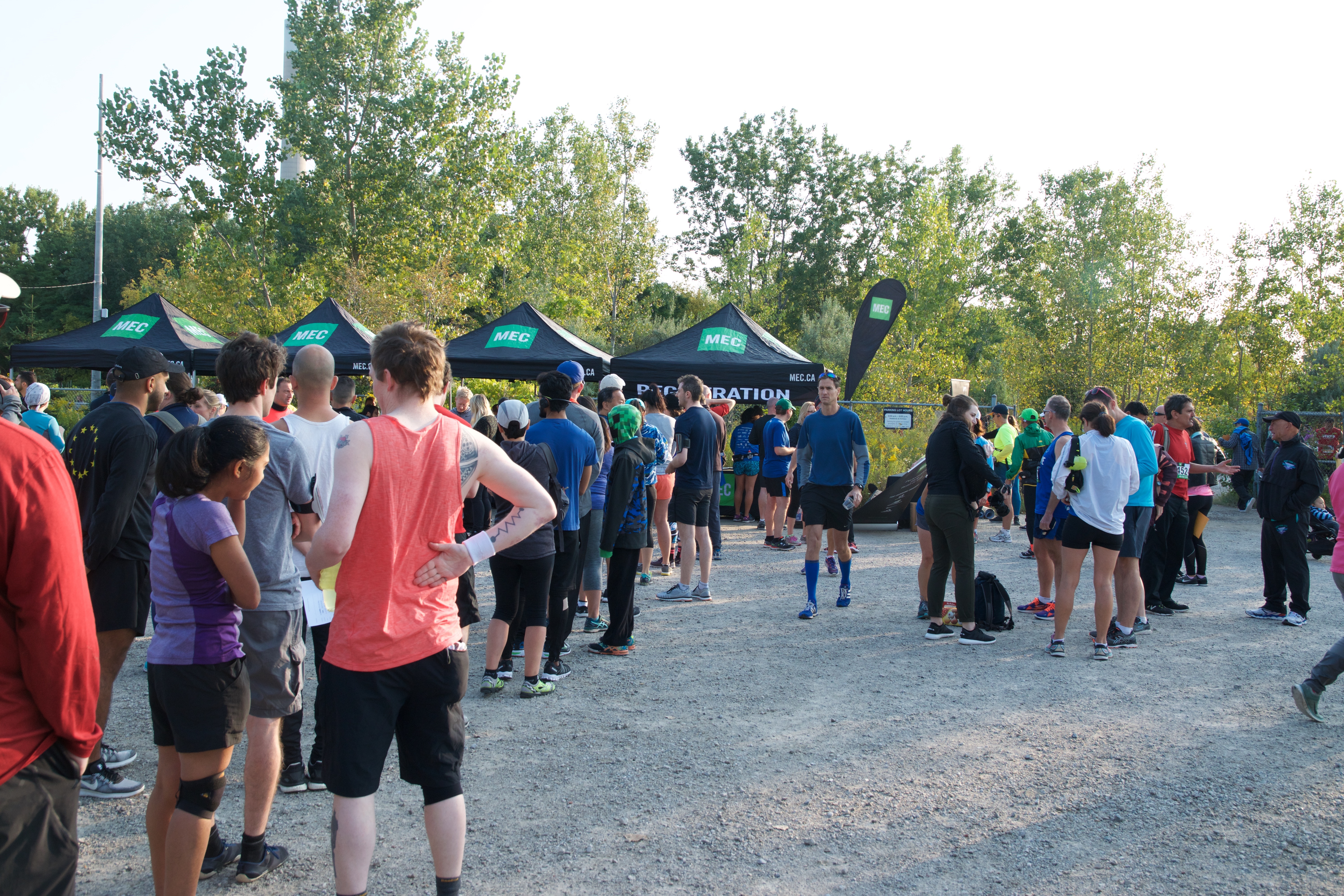 At most races, there is a guy’s voice blasting over loudspeakers in the lead up to the start (and I find it amazing that in all the races I run it’s almost always the same guy), but Tommy Thompson Park is a nature conservatory where loudspeakers aren’t allowed. It was so much nicer to mull about in peace and quiet as we went through our final preparations. (Race organizers take note!)
At most races, there is a guy’s voice blasting over loudspeakers in the lead up to the start (and I find it amazing that in all the races I run it’s almost always the same guy), but Tommy Thompson Park is a nature conservatory where loudspeakers aren’t allowed. It was so much nicer to mull about in peace and quiet as we went through our final preparations. (Race organizers take note!)
My goal for the race was to try to crack twenty minutes, which works out to a four minute pace per kilometre, and ideally, to get a little faster as I went. Doogle and I often run races together but because this was my first 5k we agreed to go at our own pace this time around.
We wished each other good luck and waited for the countdown.
When the horn went, I took off. Unsure of how to pace for the distance and I just figured that I should be running at what feels like a hard effort.
We started a little far back in the coral so I had to work my way through the initial crowd and then again through the slower 10k runners who had started their race from the same spot only five minutes before. After bobbing and weaving for the first few minutes, I hit a nice open patch and tried to settle in.
My watch gives me my split times each kilometre and when it beeped at the 1k mark. I looked down to see 3:35 staring back at me.
“Shit”, I thought, “I probably just blew my race.”
The worst thing you can do is start a race too fast because if you burn up too much energy early, you almost always die at the end. A 3:35 start was way too fast for me to maintain over 5k and I wondered if that mistake would seal my fate.
Shorter races supposedly do give you a bit more margin for error, so I backed off my pace a little and just hoped I would have enough left to hang on at the end.
My next kilometre came in at 3:50.
“Better”, I thought.
The road swung left and turned from pavement to gravel as we started out along the far side of the park’s lagoon. I looked ahead for the pylon marking the 2.5k turnaround point. I knew it was only a few hundred metres up but it seemed much longer than that before I reached it.
I hit the turnaround and as I turned back along the course, I could see the runners behind me coming the other way. There were a lot of them right on my heels.
My third kilometre came in at 3:44. I was now starting the toughest point in the race. By 3k my legs were burning, my breathing was shallow and I felt like I was following Stephen’s advice about feeling like I might not be able to finish to a tee.
The voice in my head that sometimes tells me to stop and walk was getting louder and at that point I just tried to keep grinding. Every runner has that voice – the more experienced ones just become more accustomed to hearing it.
I finished the next kilometre in 3:58. Still under a four-minute pace but slowing markedly from my too-fast start.
With less than a kilometre to go and pushing to the limit I started focusing on markers a little bit ahead, which is a little distraction I often use at the end of a race. A big tree, a speed bump, anything that I can will myself towards. As the finish line got closer I changed to rationalizing the distance left as just one more lap of the track, then just half a lap.
I rounded the final corner and as I saw the finish line, I felt an extra wave of energy come over me.
I can’t really explain why this happens because I’ll be practically dead the second before but as soon as I see the finish I always get a shot of adrenaline, and for that final brief stretch I can start sprinting like a bear is chasing me.
I managed to pick up the pace over the last kilometre, probably only because I had some extra kick at the end, and finished the last kilometre in 3:46.
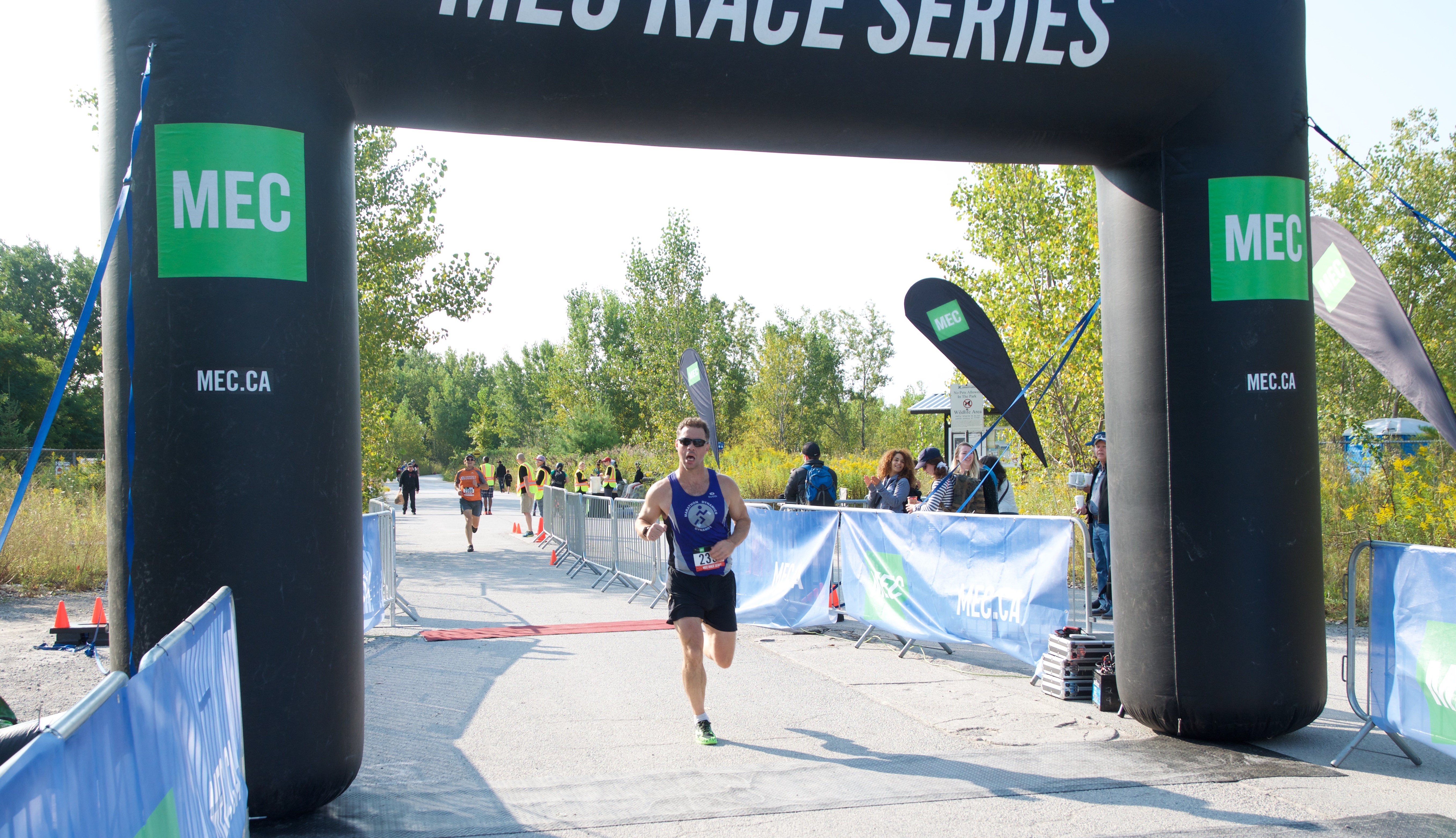 In the end I finished my first 5k in a time of 19:09, which was good for fourth place overall. Doogle, who runs circles around me in longer races, was only four seconds behind, in fifth. (I must add, this was not a big race.)
In the end I finished my first 5k in a time of 19:09, which was good for fourth place overall. Doogle, who runs circles around me in longer races, was only four seconds behind, in fifth. (I must add, this was not a big race.)
Then, because we each had 25k runs scheduled in our training plans for the day, after some water and a quick snack we headed back out on the course to run another 10k to the lighthouse and back.
The course still had lots of racers on it because it was set up as a 10.5k loop for the half-marathon and marathon distances. It was fun to chat with and encourage people as we ran beside them and the road was wide enough that we weren’t in anybody’s way.
After our cool-down run we headed back to our bikes, topped up our water bottles, and rode the 15k home. It was uphill on the way back but still a fun ride. We both found that the biking helped loosen up our legs and made us less sore over the next couple of days.
In summary, I wouldn’t describe the 5k race as “fun” during the actual race because it’s pretty much a sprint the whole way, but I certainly enjoyed the overall experience and will look forward to trying it again.
Now it’s on to The Toad in a few weeks …  [/vc_column_text][/vc_tta_section][vc_tta_section title=”The Run for the Toad (September 30, 2017)” tab_id=”1507570625844-c36566d1-f779″][vc_column_text]
[/vc_column_text][/vc_tta_section][vc_tta_section title=”The Run for the Toad (September 30, 2017)” tab_id=”1507570625844-c36566d1-f779″][vc_column_text]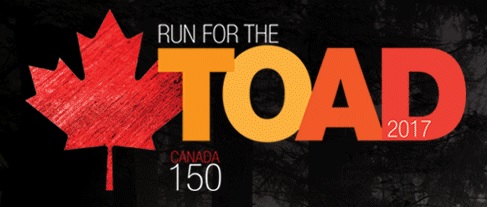
Last weekend Doogle and I took part in the Run for the Toad 25k trail race in Paris, Ontario.
The Toad is my favourite trail race. It offers a challenging course in a beautiful setting and has the best post-race spread of any race that I run (more on that later).
The race is held in the Pinehurst Lake Conservation Area. Most of the route comprises rolling and winding trails through a forest but it also includes high, open grassland areas that give you long views of the surrounding valleys. The course is a 12.5k loop and runners do laps of the course for total distances of 25k, 50k and 100k.
On a sunny, clear, crisp day like the one we had last weekend, racers get to experience this area in its resplendent fall glory.
When Doogle and I arrived at the race, we got stuck in a long line of cars winding their way into the parking area and we weren’t entirely sure when our race would start. We nervously jogged over to the main tent to pick up our race kits and confirm the start time.
As we approached, unbeknownst to us, the 50k race was about to start. (The longer races start first so the runners are spaced out on the course.)
Most races start with a horn but the Toad uses a cannon. I had forgotten about this tradition and was busy mulling about looking for the race-kit line when it fired to thunderous effect. The sound was so loud that the fillings rattled in my teeth and I instinctively ducked for cover, much to the amusement of those around me who knew better what was coming.
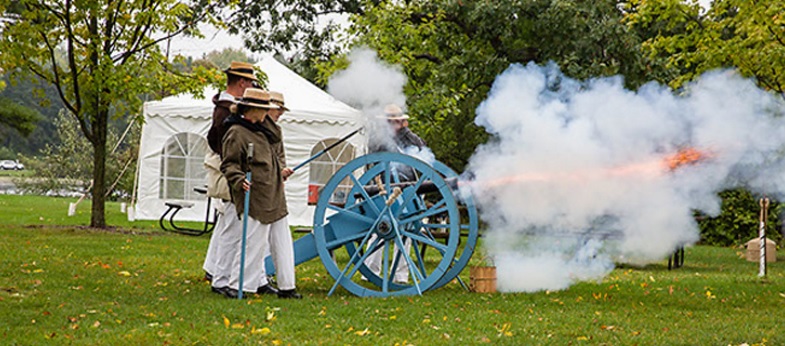
If our little jog to the starting area hadn’t got my blood pumping, that cannon sure did!
It turned out that our race started a little later than we had thought so we were able to get sorted and still had time for some last-minute stretching. We headed over to the start line and, after saying hello to some familiar faces, we wished the runners around us a good race and waited for the next cannon blast to send us off.
It’s always a good idea to start slow in an endurance race but the Toad has a narrow section about 500 metres into the race and if you’re too far back you can get stuck behind a large crowd and end up having to walk it. Doogle and I knew better so we went out a little hard to ensure that we would be clear of the main pack and, once we got through that first section, we slowed place our pace and settled into a nice rhythm.
As already mentioned, the Toad is a challenging course so the best approach is to run the first loop at a little less than maximum effort because the hills are a lot tougher the second time around. With that in mind, Doogle and I planned to run the first lap together and had then agreed to go at our own paces after that.
Trail racing is different than road racing in a number of ways. Roads are typically graded on a gradual slope but on trails the elevation changes more frequently and the inclines and declines are steeper. Also, trail footing is often uneven and there are exposed tree roots all along course so you have to shorten your stride and keep your eyes on the ground.
Runners zone out at their peril – and that’s a lesson I learned the hard way.
Trails often have natural bowl-shaped sections and if you accelerate down into them you can use your momentum to slingshot yourself up the other side using much less effort. But as you tire throughout the race though, your form can slip and your reaction time slows, and those merciless tree roots seem to almost reach up as you pass over them.
The last time I ran the Toad I caught my foot on a root as I was accelerating down into one of these bowls and barrel rolled onto a section of gravel. The impact bloodied my arm and shoulder and left me with a pretty good scar on my right arm.
This time around I slammed my feet into two tree roots during the race, just catching myself from a full wipe out both times. Doogle wasn’t as lucky and had one tumble, but he landed on dirt and used his hands to catch his fall (and was fine afterwards).
Over the first few kilometres the trail was still pretty crowded with other runners so we couldn’t let it out on the initial downhill sections and had to brake at times instead. Doing this can fry your quads in a hurry if you’re not careful.
Experienced trail runners will tell you that the best approach is to back off your pace on the uphill sections and to save your energy for the downhills, because the time you give up by going slow on the uphills is more than made up on the downhills if you’ve saved enough energy to hold your form (and avoid the ominous tree roots).
Things slowly started to open up and it was fun to get reacquainted with the course as we rounded each corner.
Doogle and I finished the first lap in just under an hour. I wasn’t too focused on my time for this race but decided then and there that I would try to crack two hours for the day. (My previous best time was 2:11:3 but I had to run/walk the last 5k after my wipeout that year.)
Doogle started to pull away and I eventually lost sight of him.
The kilometres rolled by and I tried to focus on steady breathing and keeping a smooth cadence.
The Toad has a lot of hills but none is more dramatic than “The Wall’ at about the 11.5k mark. You don’t run this hill so much as scamper up it. Then, if you aren’t too bagged at the top, it’s downhill from there, so if you’ve got some life left in your legs by that point you can really open it up and cruise on home.
On the first lap this hill didn’t seem as steep as I remembered it but by the second lap I could have sworn that someone had jacked up the slope another 10 degrees because, at that point, it lived up to its nickname. I decided to speed walk up and, once I hit the top, I let out everything I had left over the final kilometre.
This year I finished in a time of 2:00:33, good for 21st overall. Doogle made it around in 1:57:33 and finished 14th.
After the race we decided to wade into Kettle Lake to give our legs a chance to cool. I don’t know why more runners don’t do this at the Toad because the cold water does wonders for your recovery. We then headed back to the car and changed into dry clothes before making our way over to the finishers tent.
At most races you are handed a green banana and a stale bagel when you finish, which is fine with me because I’m not usually very hungry right afterwards. But the Toad is in a league of its own in the post-race food category.
This year’s buffet included Chick Pea, Quinoa, Beet and Spinach, and Tuscan Penne salads, followed by BBQ Lemon Chicken Breast and your choice of seasonal fruits and assorted pies. Tim Hortons was also giving out free coffee, hot chocolate, cookies and donuts.
Needless to say, we were well sated by the time we rolled ourselves out of there.
After briefly watching the 50k and 100k runners still running their loops (I marvel that anyone can run a 100k, especially over that course), we made our way back to the car contented and happy.
Overall it was just about a perfect race day. We had great weather, really nice chats with random fellow runners both during and after the race (the Toad always bringing out the best in everyone involved), and Doogle and I both ran PBs.
Now it’s on to my goal race to finish off the summer season – the Scotiabank Waterfront Toronto Half Marathon on October 22nd.  [/vc_column_text][/vc_tta_section][vc_tta_section title=”The Scotiabank Toronto Waterfront Half-Marathon (October 22, 2017)” tab_id=”1509291366204-7532fc62-494f”][vc_column_text]
[/vc_column_text][/vc_tta_section][vc_tta_section title=”The Scotiabank Toronto Waterfront Half-Marathon (October 22, 2017)” tab_id=”1509291366204-7532fc62-494f”][vc_column_text]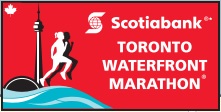 This summer I chose the Scotiabank Toronto Waterfront half-marathon as my goal race with a target time of under 1:30:00. My PB for the half was 1:33:14, so that goal seemed within reach. But of course, thinking about it and doing it aren’t the same thing, and the faster you get, the harder it is to shave off more time.
This summer I chose the Scotiabank Toronto Waterfront half-marathon as my goal race with a target time of under 1:30:00. My PB for the half was 1:33:14, so that goal seemed within reach. But of course, thinking about it and doing it aren’t the same thing, and the faster you get, the harder it is to shave off more time.
For me, running is a journey and races are checkpoints that periodically mark the way.
When I first started racing, my main goal was to cover the next longest distance, from the 10k to the 10 miler to the half-marathon to the 30k and then finally to the full. My checkpoints then were based on distance.
Today when I race I am trying to run faster and my checkpoints are measured in time. At the start of each season, I choose a race and pick a goal time. Then my running coach builds a training plan for me to follow to get there.
I started training for this race at the end of June and between then and last weekend I ran four times a week for eighteen weeks, logging a total of 852 kilometres over that span. I had been putting up consistently faster times on my training runs this summer, so I figured I had a new PB in me, but I wasn’t sure by how much.
The Scotia is a big city race, attracting runners from 70 countries with a total of 24,000 participants who run the 5k (10,000), half-marathon (10,000) and marathon (4,000). I tend to gravitate toward smaller races so this would be a very different experience. For comparison, my last two races leading up to this one had totals of 249 and 375 runners.
This was a local race for me and that made the logistics a bit easier. I got up early to stretch and made my trusty race-day breakfast of steel cut oats. My wife Marla dropped me off at the starting line and after scaling a few barricades to get across the finish line to the bag check area, I dropped off my dry clothes for after the race and then found a quiet side street to warm up.
Not long after that a voice came over the loud speakers and the sound echoed between the buildings. “Good morning runners and welcome to the 2017 Scotiabank Waterfront Toronto marathon ….”
I made my way over to the starting line and sardined myself into the starting corral with the 14,000 other half-marathon and marathon runners.
Mayor Tory gave a short speech followed by a moment of silence in memory of running icon Ed Whitlock, who died recently. His most amazing accomplishment, among many, was to run a 2:54 marathon at the age of 70. (I can only dream of ever hitting that time.)
Then someone sang Oh Canada (I sang along but surprisingly most didn’t) and after that I wished the runners around me good luck as the horn sounded and off we went up University Avenue toward Queen’s Park.
There is a unique sound at the start of big races when everyone first takes off. No one is breathing hard yet and everyone is stepping lightly with an easy stride. All you hear is the whirring pitter-patter of rubber hitting asphalt as thousands of shoes tap the ground. Always a cool moment.
My plan was to break this race into 5k chunks where I would gradually increase my pace per kilometre from 4:20 for the first 5k, to 4:17, then 4:13, and finally down to 4:10. Then, at 20k, my hope was that the finish line would pull me in the rest of the way at whatever pace I had left.
The first 5k segment started with a slight uphill for two kilometres before it flattened out and then transitioned into a long but gradual downhill section. This part of the course ran through the heart of the city, from University Avenue to Bloor Street and then down Bathurst Street. Spectators lined the way and there were also designated cheering sections where different groups or bands were whooping it up, which added to the festive feel.
It’s always hard not to go out too fast at the start because you feel like you can run forever. But of course you pay for it later, so I tried to focus on maintaining an easy stride and keeping my breathing calm.
I finished the first 5k segment at a 4:21 per kilometre pace.
The next 5k included the end of the long downhill section and then the turn west out to Ontario Place and along Lakeshore Boulevard. I picked up the pace a little but it wasn’t easy. I just wasn’t getting into a rhythm.
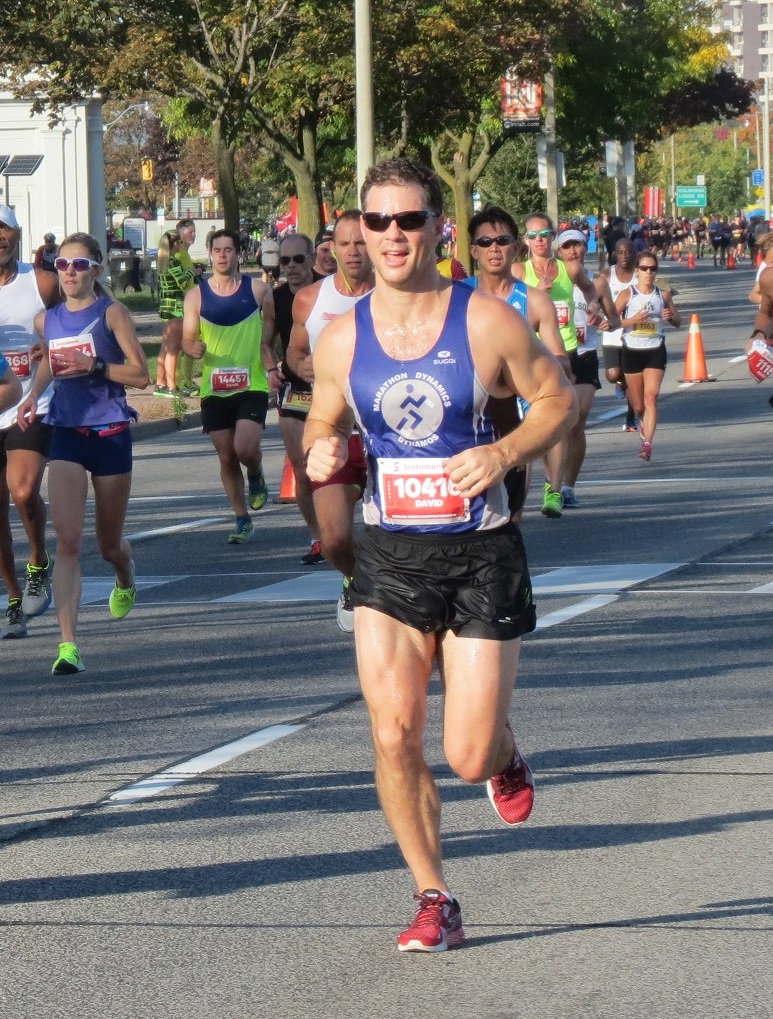 I wore my purple Marathon Dynamics singlet for the race, and that got me some extra encouragement from friends I have met through the running community who came out to cheer us on. When I was running this section one of my running coaches, Roz, ran out onto the course to give me a high five as I ran by. (She’s an energizer bunny who exudes positive energy … and she can run like the wind.)
I wore my purple Marathon Dynamics singlet for the race, and that got me some extra encouragement from friends I have met through the running community who came out to cheer us on. When I was running this section one of my running coaches, Roz, ran out onto the course to give me a high five as I ran by. (She’s an energizer bunny who exudes positive energy … and she can run like the wind.)
I finished the next 5k at a 4:18 per kilometre pace.
At the 10k point I knew I needed to keep picking it up if I was going to run a sub 1:30 time. But as I made the turn east along Lakeshore Boulevard and headed back toward the city, my stride felt laboured. I was working hard to hold my pace and was feeling the heat. There were no clouds and running eastward at about 10 a.m. put us straight into the path of the sun.
The spectators had thinned out now but at one point someone had set up a makeshift tribute to Gord Downie with some posters and a radio, which was playing Wheat Kings as I ran by. Cool moment.
I finished the next 5k at a 4:23 per kilometre pace.
We hit a long uphill section at about the 17k mark and I was really feeling tired. The group I had run with for most of the race pulled ahead and I couldn’t stay with them. At that point the voice in my head went to work.
Your body can do more than your brain thinks it can but your brain can be a powerful adversary in those tough moments.
As soon as I realized that sub 1:30 wasn’t in the cards, a little voice in my head tried to talk my body into a walk break. “Maybe I’ll sign up for the Hamilton half in two weeks and try for sub 1:30 there … in which case I should back it off now”, “I should save some energy for the last few hundred metres when the boys will be watching … ” (knowing that Marla and our sons would be there to see me come in).
I pushed those thoughts out of my mind and just focused on holding my form and grinding out the next stretch.
I finished the next 5k at a 4:32 pace.
I finally made the turn north up Bay Street and at that point I knew that the finish line was a little more than a kilometre away. This section had a slight incline and although I felt slow, my Garmin would later confirm that I managed to run the last kilometre at a 3:59 pace. Thank goodness for the magnetic pull of the finish line.
I crossed in a time of 1:32:27 (302nd overall). Not the sub 1:30 time I was hoping for but still 47 seconds faster than my previous personal best.
I initially felt a little disappointed. But when I thought about all of my training runs, my super fun mid-season races and all of the moments that led up to this day, I reminded myself that the journey had been its own reward. I also took a moment to feel gratitude, for being healthy and for being able to live an active lifestyle that allows me to run these races. I have much to be thankful for.
I changed into my dry clothes and met up with Marla and the boys. I grabbed a free coffee and we watched the sub three-hour marathoners come in for a while before making our way home.
The boys are keen to run a 5k so we signed up for one tomorrow. I‘ll take it easy after that and ramp up again at the end of November. Meanwhile I’ll probably keep running, but on the trails and at a relaxed pace that allows me to soak in our beautiful fall surroundings.
Until next time.  [/vc_column_text][/vc_tta_section][vc_tta_section title=”Tout Est Possible (March 21, 2018)” tab_id=”1521642166239-483e5598-c6d0″][vc_column_text]Along my usual running routes I see a little graffiti now and then.
[/vc_column_text][/vc_tta_section][vc_tta_section title=”Tout Est Possible (March 21, 2018)” tab_id=”1521642166239-483e5598-c6d0″][vc_column_text]Along my usual running routes I see a little graffiti now and then.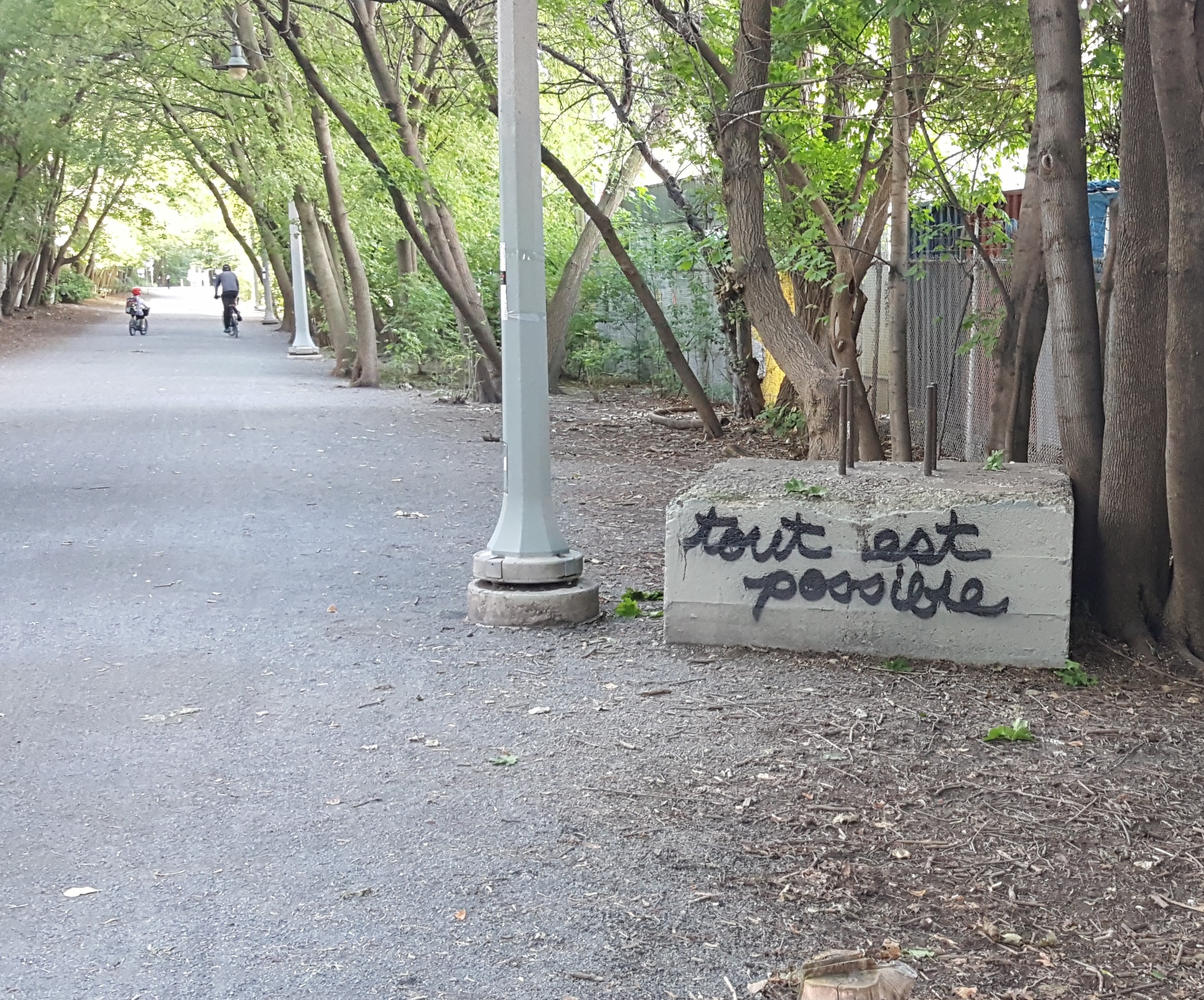
Usually it is someone’s name written in big letters or painted in cartoonish symbols. Normally I don’t take much notice, but there is one repeated message that always catches my eye: Tout est possible.
The person who writes it is very determined. One day I will run by and see the message written in neat cursive and by the next day a city worker will have painted over it. But then, a few days later, the words are back and the cycle repeats itself.
The writing looks so similar each time that it seems as if the original message has pushed its way through the covering paint to reveal itself once again.
Tout est possible – anything is possible.
I don’t think it’s a coincidence that these words are being insistently rewritten along well-used running trails. They resonate profoundly within the running community.
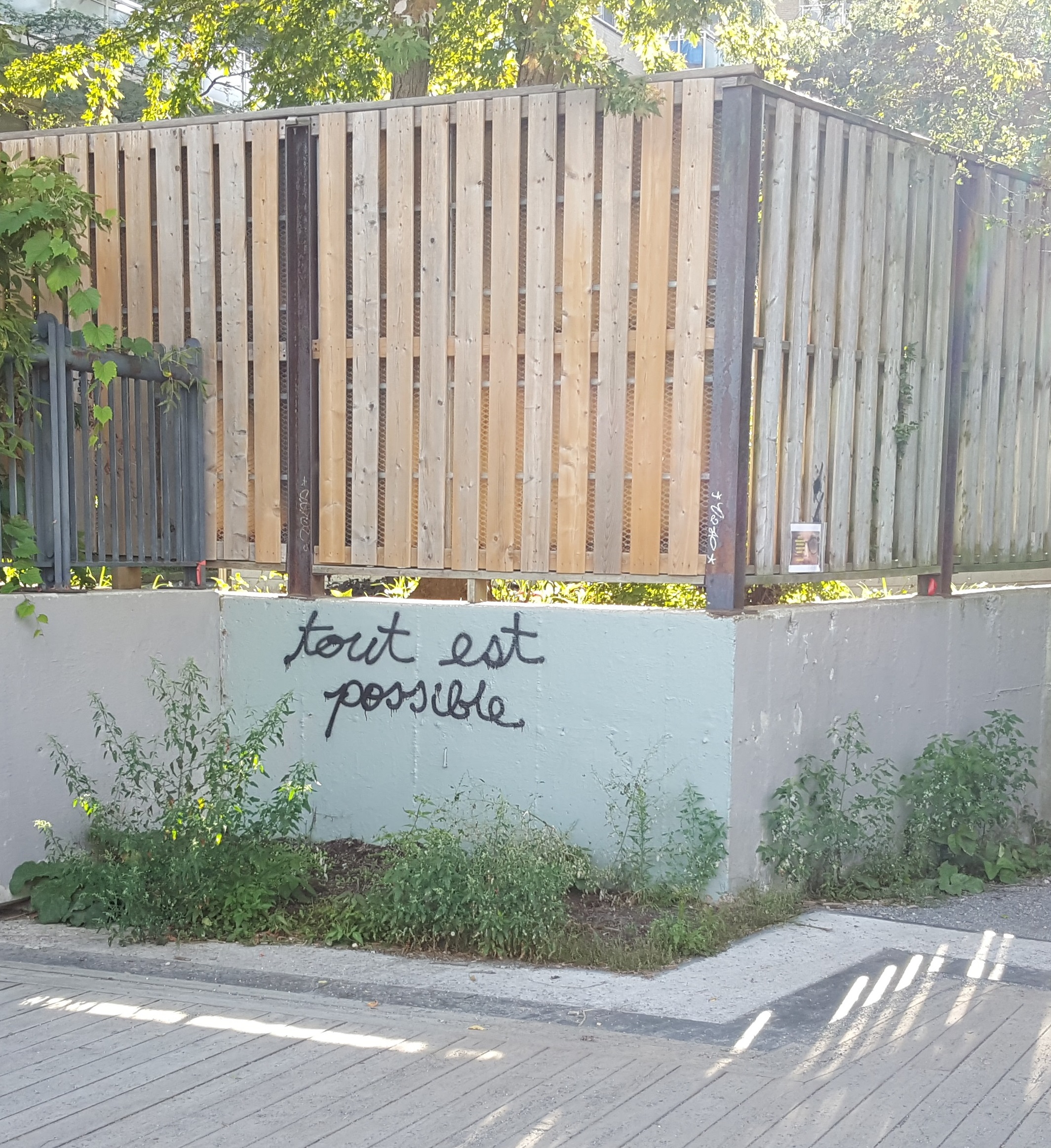 I can recall many conversations with experienced runners who are still amazed at how far their journey in the sport has taken them. Each began with the same uncertain first steps but, over time, as the miles rolled by and their well-worn running shoes piled up, goals that once seemed impossible were suddenly within reach.
I can recall many conversations with experienced runners who are still amazed at how far their journey in the sport has taken them. Each began with the same uncertain first steps but, over time, as the miles rolled by and their well-worn running shoes piled up, goals that once seemed impossible were suddenly within reach.
To cite a personal example, I ran for years without ever being able to break a 5:00/km pace in the half marathon, which works out to a finishing time of 1:45:00.
I figured that time was simply out of my reach. But then one day I hit it and, not long after, I was routinely running faster and longer on training runs.
I’ve managed to reach other goals over my eight years as a runner but I hold one above all others: winning a silver medal at the Around the Bay (ATB) Road Race.
This medal is awarded to runners who finish in less than 2:15:00, which works out to a pace of 4:30/km over the 30k distance.
The ATB is the oldest road race in North America. It starts out relatively flat and then turns hilly over the back half. With that format, if you start too fast, the last 10k will grind you up, but if you start too slow, you’ll be trying to make up time at the end through rolling hill sections on already tired legs.
Earning a silver medal seemed unthinkable to me the first five times I ran this race.
Then, last year, in my sixth attempt, I crossed in a little over 2:18 on a very windy day that made the ATB’s normally tough weather conditions the toughest I had encountered yet.
Once again, the impossible suddenly seemed possible.
Since that day last April, I have run several other races of varying distances, but all of my training has focused on the single goal of winning a silver at the ATB in 2018.
This Sunday I will take my shot … and I’ll check back soon to tell you how it went …  [/vc_column_text][/vc_tta_section][vc_tta_section title=”Around the Bay Race Report (March 25, 2018)” tab_id=”1523921254079-7b655d6f-37fd”][vc_column_text]
[/vc_column_text][/vc_tta_section][vc_tta_section title=”Around the Bay Race Report (March 25, 2018)” tab_id=”1523921254079-7b655d6f-37fd”][vc_column_text]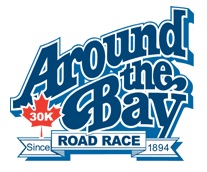 On Sunday March 25, 2018 I ran my seventh Around the Bay (ATB) road race.
On Sunday March 25, 2018 I ran my seventh Around the Bay (ATB) road race.
This was my first legitimate shot at earning an ATB silver medal, which is awarded to male runners who complete the course in under 2:15 and requires a pace of no more than 4:30 per kilometre.
By way of reference for any new readers, I have many running goals, but winning the silver is at the very top of my list.
Over my first five ATB years I finished well off of the silver-medal qualifying time and the very idea seemed impossible to me. But my dedication to training kept increasing and last year I finished in 2:18 in conditions that were considered extremely windy, even for a course that is known for its unforgiving weather.
Suddenly the impossible seemed possible, and from that day forward, while I trained for and ran other races, earning an ATB silver medal became my primary focus.
My confidence heading in to this race was high.
I was in the middle of my best season of training and a month prior had completed the Chilly Half-Marathon in 1:28:25, which works out to a pace of 4:12 per kilometre.
That was well under the 4:30 pace I would need at the ATB, but it still wasn’t any kind of silver-medal guarantee. The Chilly is a flat course and is 21k, whereas the ATB is 30k and the last third of the race comprises of a series of rolling hills with a few epic ones mixed in for good measure.
I knew this would be a much tougher test.
In training over the winter months leading up to the race, Doogle and I had driven out to Hamilton a few times to train on the last 10k of the ATB course. We would run it backwards first, with a few extra kilometres tacked on to tire out our legs. Then, with about 15k under our belts, we would run past the famous Indian Point sign where the race turns south east onto North Shore Boulevard and try to hammer out its unforgiving 10k hill section at a pace of 4:30 or less.
We did this three times over the winter, and each time managed a pace in the 4:25/km range. With those tests also passed, I felt as prepared as I could be for the challenge ahead.
As an added bonus Doogle, my best friend and a two-time ATB silver medalist, was going to run the race with me, and I always run better when he is at my side.
Then fate threw me a curve ball.
About ten days prior to the race I felt a cold coming on and before long I had developed a deep, wet cough and my lungs sounds like popcorn when I exhaled.
Runners can often get sick before big races because they push their bodies so hard that their immune systems temporarily weaken and make them more vulnerable. I had luckily managed to avoid this risk, at least until now.
My wife and I took the kids to Florida for the March break the week before the race, and when I tried to run there, in ideal conditions, I couldn’t get a proper breath and had to keep stopping. Endurance racing is all about pushing your body to the limit and holding it there, and you need to be able to breathe properly to perform at your highest and best level.
When we flew back home on the Friday before the race, I had chills on the plane mixed with brief hot flashes. It had been a week since it started and whatever sickness I had was still getting worse (and that’s after years of never having more than a sniffle!).
I never seriously considered not showing up for the ATB, but the confidence I had toiled hard to earn had suddenly evaporated.
I stayed over at Doogle’s house in Oakville the night before, as usual, and he confessed to having a lot of back pain after a recent fall at the hockey rink. Suddenly we were the walking wounded!
We woke early to allow extra time for stretching and for downing heaping servings of Marija’s tasty oatmeal parfaits. Then we headed out for the starting line, checking the weather report every five minutes and noting the flapping of every flag to gauge the wind conditions as we approached the course.
Not long after that we were in the starting corral and that “holy shit this is really happening, here we go” moment was on me before I knew it.

The horn sounded and we were off.
You really can’t crush your race in the first few kilometres but you can certainly blow it.
There is always a surge at the start because a lot of runners start off way too fast. The best you can do is settle in to your pace and let the other runners go. That said, you’re always full of energy and the first 2k of the ATB has a slight downhill … so we still clocked in at paces of 4:14 and 4:24 over that initial stretch.
Then we turned along Burlington Street and entered the worst part of the course, a long stretch of factories and barren roads that are mostly frequented by heavy trucks. The air has a bad smell and the wind hammers away at you as you crest several overpasses.
The key in this section is to conserve as much energy as you can, by holding a steady pace and trying to draft behind other runners to stay out of the wind. We rolled off the stretch from 2k to 10k at paces of 4:26, 4:28, 4:27, 4:25 4:28 and 4:29, 4:26 and 4:19.
By the time we reached 10k we were about 30 seconds ahead of the 4:30 pace that we needed, exactly as planned.
We turned off of Burlington Street on to Eastport Drive and started along the 7k stretch that is always the windiest. This narrow section crosses between Hamilton harbour to your left and Lake Ontario to your right, and the wind whips across as you go.
It wasn’t blowing as hard as last year, but it was still windy. That’s pretty much a feature of this race.
The gel I took at 10k gave me a little surge of energy but by about 12k it was also causing some stomach cramps. I put it out of my mind.
I needed to get through this stretch and to the Indian Point sign at around a 4:30 pace and hoped that once there, the familiarity of the route and the pull of the finish line would help bring me home.
We ran this section in 4:23, 4:22, 4:21, 4:18, 4:18, 4:27, and 4:30.
When we reached 17k, Doogle’s wife Marija was there to hand us water bottles (thanks again Marija!) and as we turned on to North Shore Boulevard we were about 45 seconds under a 4:30 pace, again, exactly as planned.
 I took another gel as was passed the Indian Point sign and we headed into the rolling hills section that I knew so well I could run it with my eyes closed.
I took another gel as was passed the Indian Point sign and we headed into the rolling hills section that I knew so well I could run it with my eyes closed.
My stomach started to cramp again.
This was a problem because I knew I needed to take about four or five gels over the 30k race to maintain maximum intensity and the second one wasn’t agreeing with me either. I had to weigh the risk of not taking more of them and forgoing their energy boost, with the risk of more, and increasingly worse, stomach cramping.
At the same time, the natural surge of energy I had expected and hoped for when we hit this familiar section of the course didn’t materialize. Instead, I started to feel sluggish and tired.
Initially, in the moment, I just took it as a low point and kept grinding. Many times these difficult moments can pass and you can come out the other side if you just dig deep and hold on.
I from 18k to 24k I ran at paces of 4:26, 4:30, 4:25, 4:24, 4:34, 4:38 and 4:30.
Doogle and I hadn’t run side by side the whole race but we stayed nearby and offered each other words of encouragement throughout the race. By the 24k mark I wasn’t talking any more, all I could do was put one foot in front of the other and hang on.
The silver medal was so close I could taste it … but my energy was gone.
I couldn’t get a proper breath and my legs were starting to seize up. I pulled over and started to walk (I can’t remember doing this in a race in years). My mind was screaming “get going” but my legs were cramping and I felt a light headed. I tried to keep running but after about 50 metres I had to stop again. I was gassed.
I ran the 25th kilometre in 5:16 alternating between jogging and walking.
Just that quickly, the silver was out of reach. And I knew it.
I offered encouragement to waves of runners who flooded past. Some urged me to keep going and I smiled back.
I ran the last four kilometres in 4:59, 5:03, 5:47 and 7:05 and crossed the line in 2:24 before hobbling to the bag check to pick up my gear.
I looked for Doogle but he had to leave right after the race to coach his daughter’s playoff hockey game, so we caught up later.
When I got to my car I was shivering. It was -7 that day and my body temperature always drops after a long, hard run so I cranked the heat and put my seat warmer on full blast. I waited for the disappointment of not earning the silver medal to hit hard, but it never did.
Reflecting back, I think that was for several reasons.
Firstly, the workouts and training runs I completed in the dark hours of early mornings, both at the track and, more often, outside through everything mother nature threw at me all winter, were accomplishments in themselves, silver medal or not.
Winning the silver medal is super hard. This year only 281 of the 3,924 runners who finished the 30k race did so in less than 2:15. (By the way, Doogle, now a three-time silver medalist, was among them – woot! woot!)
Lastly, as my old buddy Seth likes to say, only those who have been through the deep, dark valleys can truly appreciate the views from the highest mountaintops. I am telling myself that this year’s valley will just make earning the silver next year that much sweeter.
To that end, I signed up for next year’s ATB a few days after the race … because they’re going to hang that medal around my neck if it kills me!  [/vc_column_text][/vc_tta_section][vc_tta_section title=”Mississauga Marathon Race Report (May 6, 2018)” tab_id=”1542317026792-0ca5ac72-0b74″][vc_column_text]I almost didn’t run this race.
[/vc_column_text][/vc_tta_section][vc_tta_section title=”Mississauga Marathon Race Report (May 6, 2018)” tab_id=”1542317026792-0ca5ac72-0b74″][vc_column_text]I almost didn’t run this race.
It took a full week after the Around the Bay (ATB) before I was recovered enough from the flu to start up again. At that point I had only four weeks of training left before race day and April had plenty of winter weather left for us.
On Sunday, April 15, my plan called for my longest training run: a 36k test that I affectionately referred to as “the beast”.
The weekend before, I had tried to run 32k with my running group and it hadn’t gone well. I ran the first 26k too hard and died at the end. (Also, I had almost no water and suffered for it.)
On the weekend of April 15, we had a whopper of a storm: frozen rain mixed with snow and strong winds. Basically, weather chaos that shut down the city.
I got suited up on Sunday mid-morning and headed for Mount Pleasant cemetery, figuring I would just do 5k and 6k loops in it until I hit 36k. The footing outside was terrible but the cemetery is almost always shovelled and salted.
On that day it was locked up tight. I guess the maintenance crew figured there was no point in doing anything on the weekend when the forecast predicted that the storm would sock us in until at least Monday.
Then I did something I almost never do. I packed it in.
I went back to the house, had the same hot bath that I normally would after a long run, sulked, and started coming up with reasons to bail on the marathon.
“I had to take time off training and now I probably won’t run a personal best”, “It wasn’t my fault, the weather made it impossible!”, “The marathon just isn’t my race” … etc.
I phoned my coach Kevin the next day to tell him what was on my mind. The first thing I said was, “I guess everyone bailed on the group run?” It had also been scheduled for that Sunday, and I just assumed that everyone else would react as I did.
“Nope.” Said Kevin. “A surprising number of the group showed up and we got it in.”
“How?” I asked, truly stunned that they had gutted it out.
“When you’ve got to get it done, you find a way.”
Kevin told me that I pretty much had to run the 36k if I wanted to have any realistic shot at a PB and a possible Boston qualifier (BQ). I told him I was going to either run it on Tuesday or switch to the half-marathon instead.
After we talked, I thought about the other runners in my group who had gutted it out. Then I got a more than a little annoyed with myself for not having persevered. Over the years I had run through every kind of weather imaginable, and I almost never missed a training run.
I woke at 5 a.m. on Tuesday morning and went through my race day routines, treating this run like a dress rehearsal for the race.
The run started off rough. I just wasn’t feeling like I had any rhythm, and holding the 4:50 per kilometre pace that Kevin had in my plan felt harder than it should have. But I stuck with it, and by about 20k I was feeling great. Smooth, relaxed and confident.
I got the run in and headed back home, sweaty and tired but now fully committed to running the full marathon. It had been a long season of training, I was running faster than I ever had before, despite my ATB setback, and I was now ready to put that work to the test.
—
My goal for this race was simple: Qualify for Boston.
Father Time gave me some help this year. My age group qualifying time increased from 3:15 in the age 40 – 44 bracket, to 3:25 in my new age 45 – 49 bracket.
Runners with Boston on their bucket list (and that’s most of them) know that they need to clear their qualifying standard with room to spare because Boston is oversold every year, and the spots in each age group are awarded based on fastest times. So even though 3:25 would allow me to register, I would need to be about three minutes under that time to have a good chance of actually being granted a spot.
I figured I had a shot but after my disappointing ATB, my late-season weather challenges, and my past history of blowing up at the 35k mark in most of my other marathon attempts, my expectations were low. Bluntly put, the marathon intimidates the hell out of me because there is always a point late in those races that you can’t replicate on any training run: you are on the verge of total shutdown and only the primal urge to keep going pushes you onward.
In the lead-up to my race, I calculated that a 4:45 per kilometre pace should be enough to get me to Boston, so I set that as my goal.
I got up at 5 a.m., ate a big bowl of oatmeal, and was out the door by 6:30 a.m. I arrived in plenty of time for the race’s 7:30 a.m. start.
The start line was in the courtyard of Mississauga’s city hall, which is basically a massive concrete cavern. Everyone was milling around before the race – about 3,000 runners in total.
There was real energy in the air. Everyone was trained, tapered and hopeful that today would be a good day. There was also a feeling of camaraderie. We all knew that we were about to push ourselves to the edge and stay there for as long as our bodies and minds would allow.
When the gun went, we were greeted by a torrent of red, white and blue streamers as we crossed the start line (celebrating the race’s fifteenth anniversary). The streamer cloud was so thick I couldn’t actually see as I ran through it. We were still all bunched together, and I made a joke to the guy next to me about being sure that I would find streamers in my dryer’s lint bin a week from now (and probably my shower drain too).
We made our way over to Burnhamthorpe Road, turned west and started down the first leg of the race. I was determined not to go out too fast and was strangely pleased to see my first kilometre clock in at 5:18. I have gone too fast more times than I can count, and I wanted to run a defensive race. An easy start was critical.
I settled into a nice groove during a long and gradual downhill section, made sure to take water at each of the early stations, and just tried to lock into a comfortable pace. Once in a while I would test whether my effort was easy enough by closing my mouth and breathing only through my nose.
Doing this reduces your air intake a little and provides a good gauge of whether you’re working too hard. If you need to open your mouth to get more air, you know you need to back off your pace.
I reviewed my stats from my Garmin after the race and saw that I ran the first 10k at a 4:41 pace. That was a little faster than my goal pace of 4:45 but just about bang on when you factor in the long downhills during that section.
We ran a long stretch along Mississauga Road and crossed under the QEW. The half-marathoners and marathoners were running alongside each other, and I chatted with other runners. Then at the 14k mark the half-marathoners went straight and the marathoners turned right, and that would be the last we saw of them for quite a while.
After making that turn, our numbers really thinned out. I wound up running beside two guys named Arthur and Roger.
Arthur and I talked about our training and found that we were both trying to hit the same pace. Roger didn’t say much because he was pushing hard to hold the pace. He was breathing loudly and joked that his nickname should be Darth Vader.
We ran along Indian Road to Lorne Park Road not far from where I grew up. It was fun to run through my old stomping grounds. Unlike Port Credit, that area hasn’t changed much.
I ran the 10k to 20k section at a 4:46 pace. There was one pretty good hill and the sun was beating down on us in parts, but overall I still felt smooth and strong.
As we came up Truscott Drive to turn onto Southdown Road, I looked up to see Doogle standing by the side of the road. I went to give him a high-five and the next thing I knew he was sidling up beside me and saying he was going to run with me for a few kilometres. This was the first time anyone had paced me in a race, and it was pretty cool to have my best friend show up unannounced.
Then a moment later I heard a honk and looked over to my right to see my wife Marla and son Ben waving from our car. I hadn’t expected to see them either so suddenly there were surprises galore.
I introduced Doogle to Arthur and Roger, and on we ran. It was hard not to pick up the pace with all the excitement but Doogle and Arthur both kept their eyes on their watches and wisely reined me in a couple of times. In a marathon every drop of energy must be poured out sparingly. (I’ve learned that the hard way more than once.)
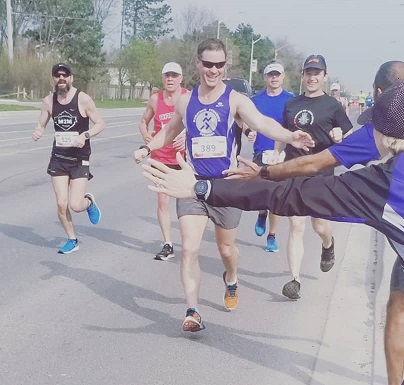 A little farther along, we could hear shouting in the distance and as we got closer I heard, “Yeah Dave! Go Dave! Woooooo! Woooooo!” There stood Tiffany, Soroush and Anastasia from my running club, out to cheer on their fellow Marathon Dynamics runners … and they were really whooping it up. (The picture on the right shows us high fiving on the way by – thanks again for the jolt of energy guys! FYI – Doogle is on the right in the black shirt, Arthur is wearing black on the left, and Roger is in red.)
A little farther along, we could hear shouting in the distance and as we got closer I heard, “Yeah Dave! Go Dave! Woooooo! Woooooo!” There stood Tiffany, Soroush and Anastasia from my running club, out to cheer on their fellow Marathon Dynamics runners … and they were really whooping it up. (The picture on the right shows us high fiving on the way by – thanks again for the jolt of energy guys! FYI – Doogle is on the right in the black shirt, Arthur is wearing black on the left, and Roger is in red.)
Doogle had to coach his son’s baseball practice so he peeled off after running with us for about 5k (thanks again for the awesome surprise!), and we made the turn east for the final 17k. We also lost Roger at about that point.
I ran the 20k to 30k section at a 4:46 pace.
Arthur and I made our way through the neighbourhood streets. The terrain started to roll for about the next 30 minutes. We ran through Jack Darling Park, where I drank my first beer, and then past Lorne Park Estates, where I used to live.
My sentimentality quickly faded. The rolling hills were taxing, and my left hip was locking up. Arthur was starting to fade. I encouraged him with all the enthusiasm I could muster, but my energy level was also dipping.
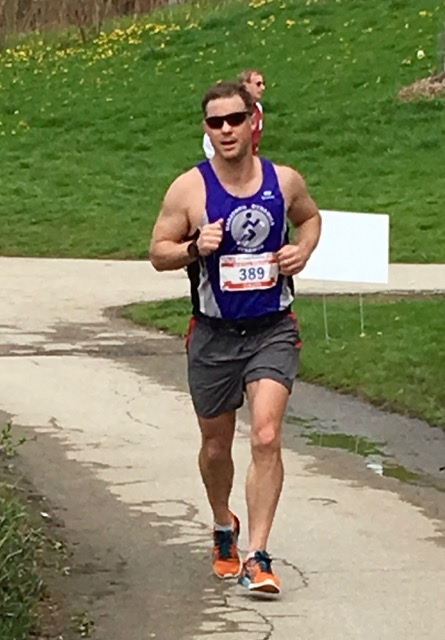 Over the next stretch we ran through beautiful lakefront parks and past spirited cheering stations that urged us onward, but I barely noticed any of it. I had reached the point in the race when all my training and preparation would be tested by one defining question: Can you hang on?
Over the next stretch we ran through beautiful lakefront parks and past spirited cheering stations that urged us onward, but I barely noticed any of it. I had reached the point in the race when all my training and preparation would be tested by one defining question: Can you hang on?
As I rounded each turn, I just tried to breathe deep and block out the pain and negative thoughts. I knew I was getting close but those last few kilometres always feel like they are taking forever.
By the 41k mark I was completely red lining. I didn’t want to slow down only to find out later that I had missed qualifying for Boston by a few precious seconds, so I poured out every last drop of energy that I had left.
As I rounded that final bend, my son Ben was there to meet me. We ran together for a short time but fast as he is, he was wearing boots that weren’t suited for a finishing kick. Ben dropped back and then my running buddy Tiffany reappeared and ran with me for a few strides, screaming encouragement and willing me to the finish line.
I crossed in a time of 3:20:54 at pace of exactly 4:45 per kilometre (and I managed to hang on through that last gruelling kilometre, running it in 4:44).
I waited for Arthur at the finish line and congratulated him on his race. Then I found Marla and Ben and they helped me change out of my wet clothes. (Picture a guy who can’t bend his knees and looks like he’s had too much to drink trying to bend down to tie his shoes.)
Before long I was home enjoying my post-race rituals of a long, hot bath, a mid-day nap and a celebratory pizza dinner … tired but contented.
——
Post script: I took a while to write about this race because I wasn’t sure if my time would be good enough to earn a spot in Boston for 2019.
While my time was under the 3:25 cut-off I needed, as mentioned above, you have to be well clear of that mark to actually get a spot because the race is always over-subscribed. Your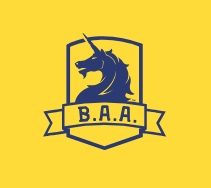 qualifying time allows you to register on the race website but then you have to wait for everyone else to register, and about a week later you find out if your time was fast enough to actually secure a spot.
qualifying time allows you to register on the race website but then you have to wait for everyone else to register, and about a week later you find out if your time was fast enough to actually secure a spot.
Until this year, runners in my age group had never needed to be more than 3 minutes and 30 seconds under the 3:25 cut-off to get in, and I was 4 minutes and 6 seconds clear, so I knew I had a decent chance … but what’s that expression about not counting your chickens until they hatch?
After registering, I nervously checked the race website each day, where the organizers kept posting updates about record enrollment for the 2019 race. I wore out the send/receive button on my inbox anxiously waiting for a confirmation email.
When the email finally arrived, it said that the cut-off for me to earn a bib for Boston 2019 was 3:20:06, which was 48 seconds faster than my time. While that wasn’t the news I was hoping for, my disappointment didn’t last long.
I ran Mississauga almost seven minutes faster than my previous personal best for the marathon, and I basically executed my race plan to perfection, which I had never really done over that distance. I also knew wholeheartedly that I left everything I had on the course that day, and really, what more can we ask of ourselves?
The reason everyone wants to run Boston is that it’s really hard to get in, especially when the qualifying goal posts keep moving. Deep down, I have an abiding faith that I’ll get there at some point, and when I do, this year’s close call will make that moment all the sweeter.
Besides, in running (and life) nothing worth having ever comes easy!  [/vc_column_text][/vc_tta_section][/vc_tta_tabs][/vc_column][/vc_row]
[/vc_column_text][/vc_tta_section][/vc_tta_tabs][/vc_column][/vc_row]








